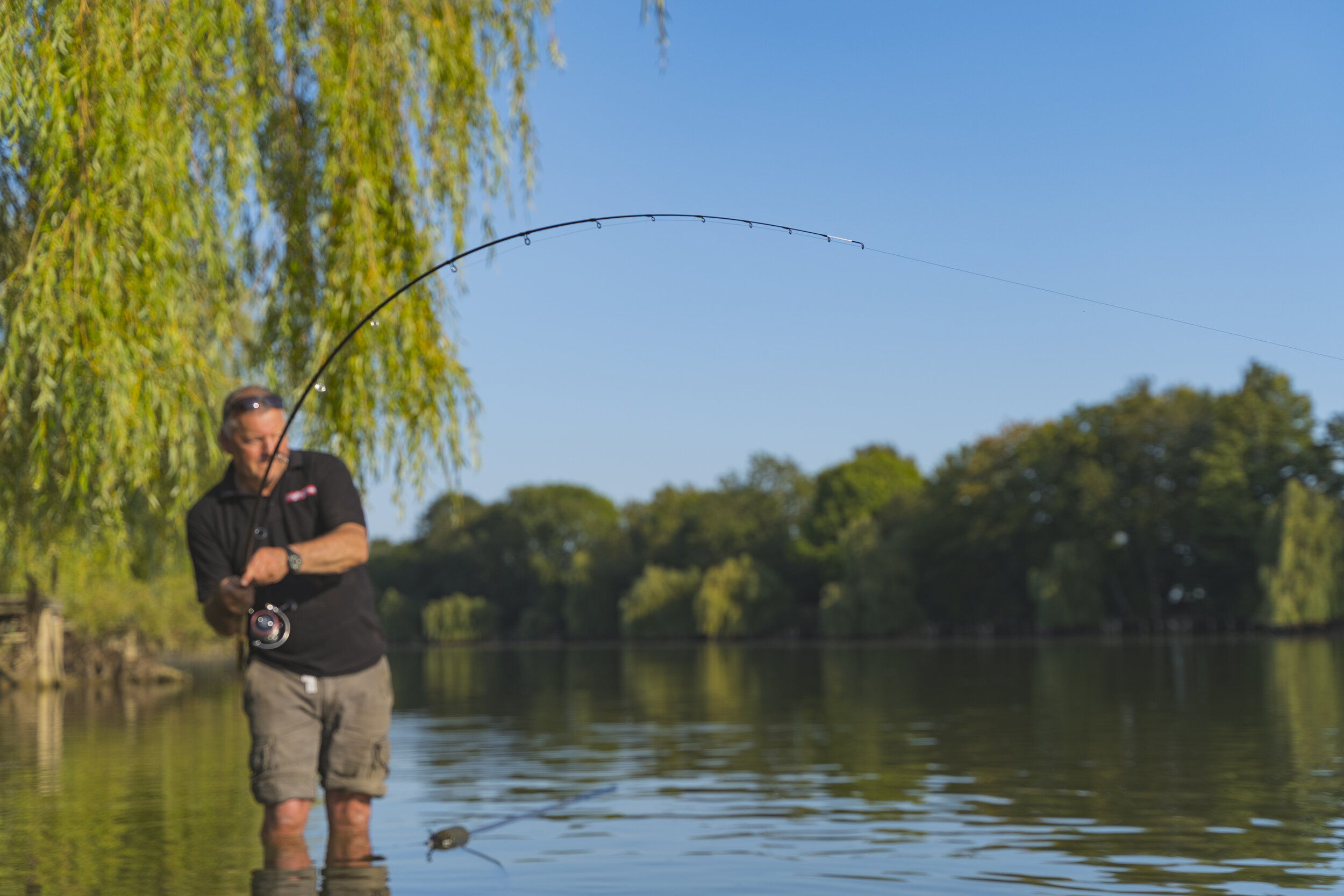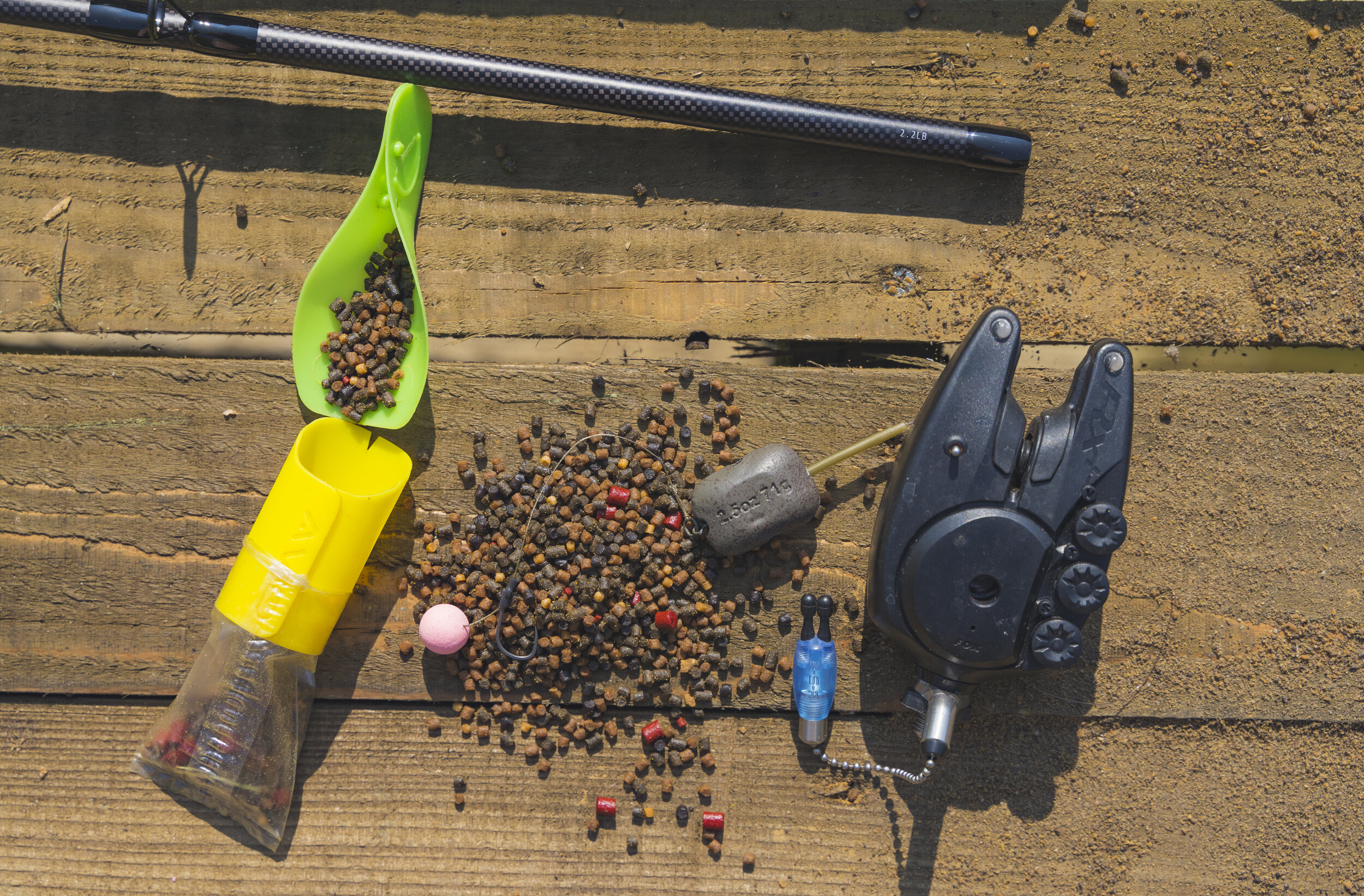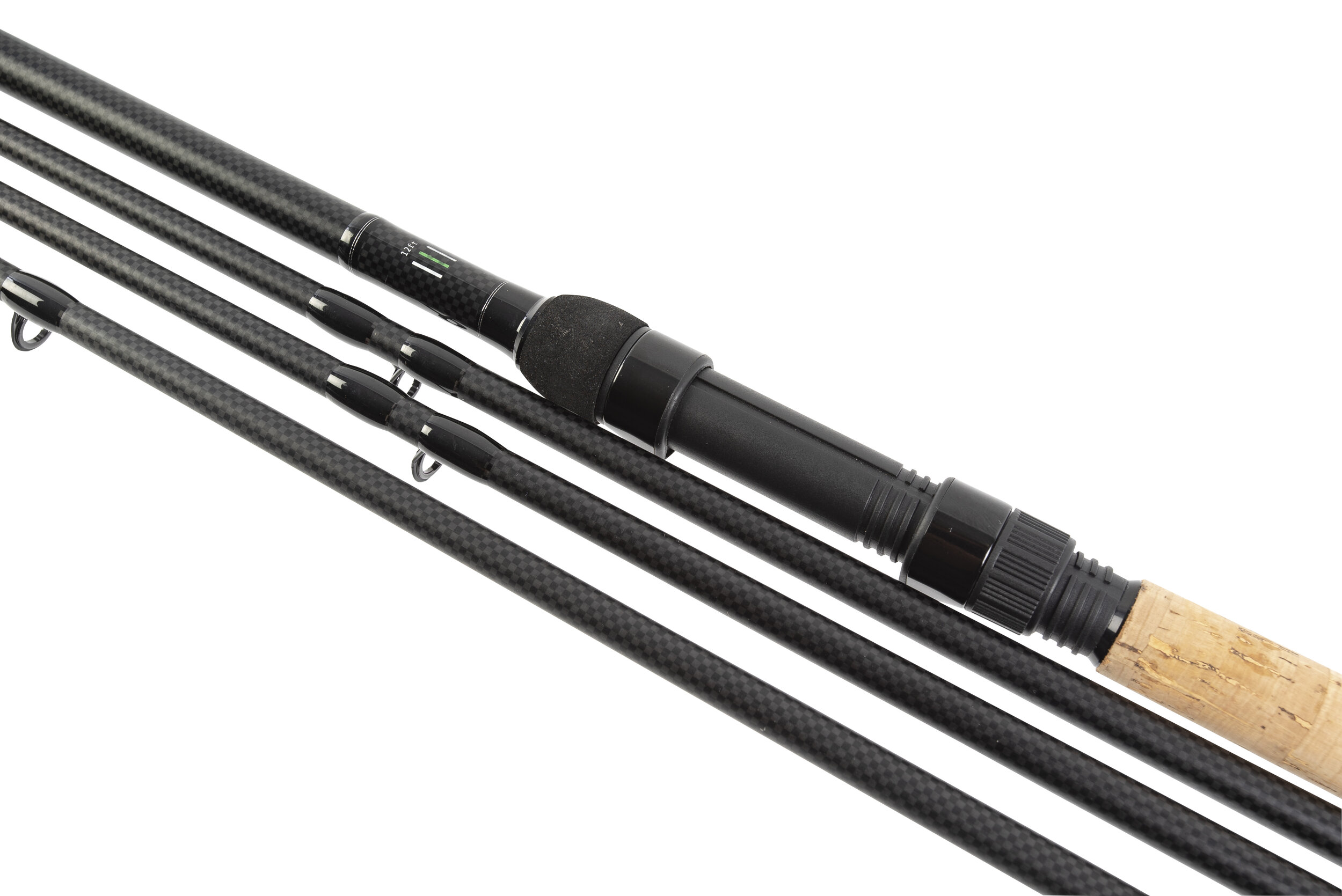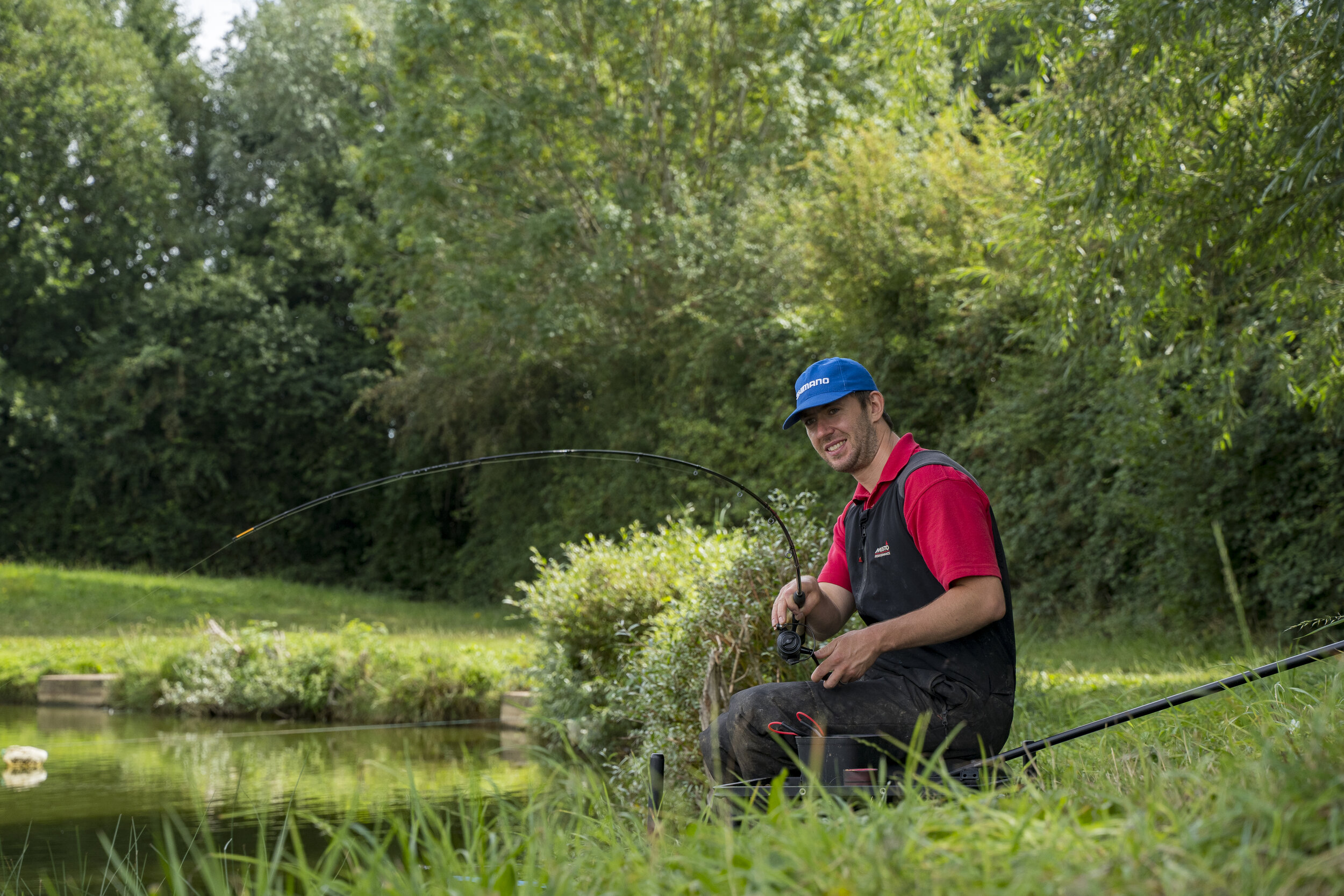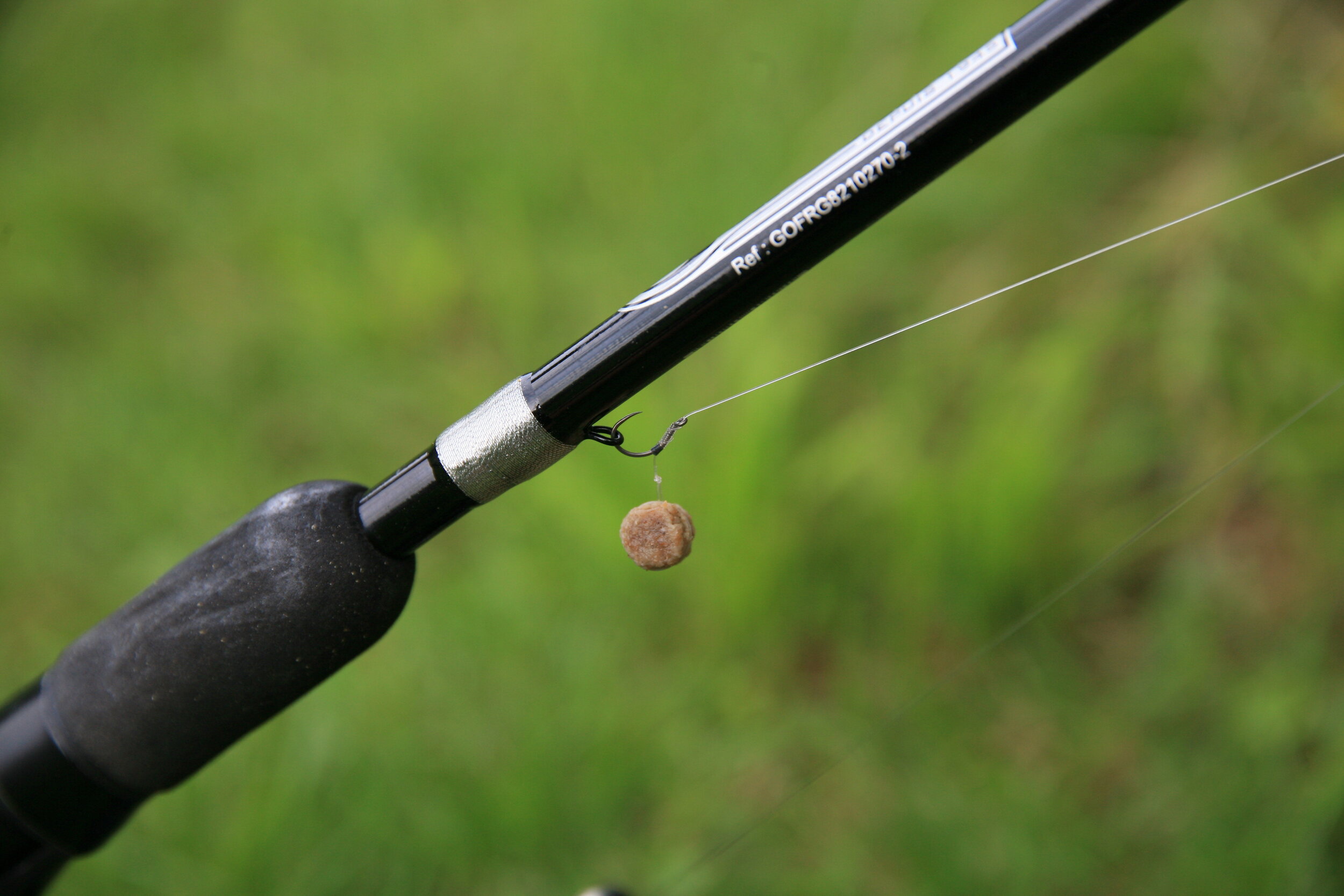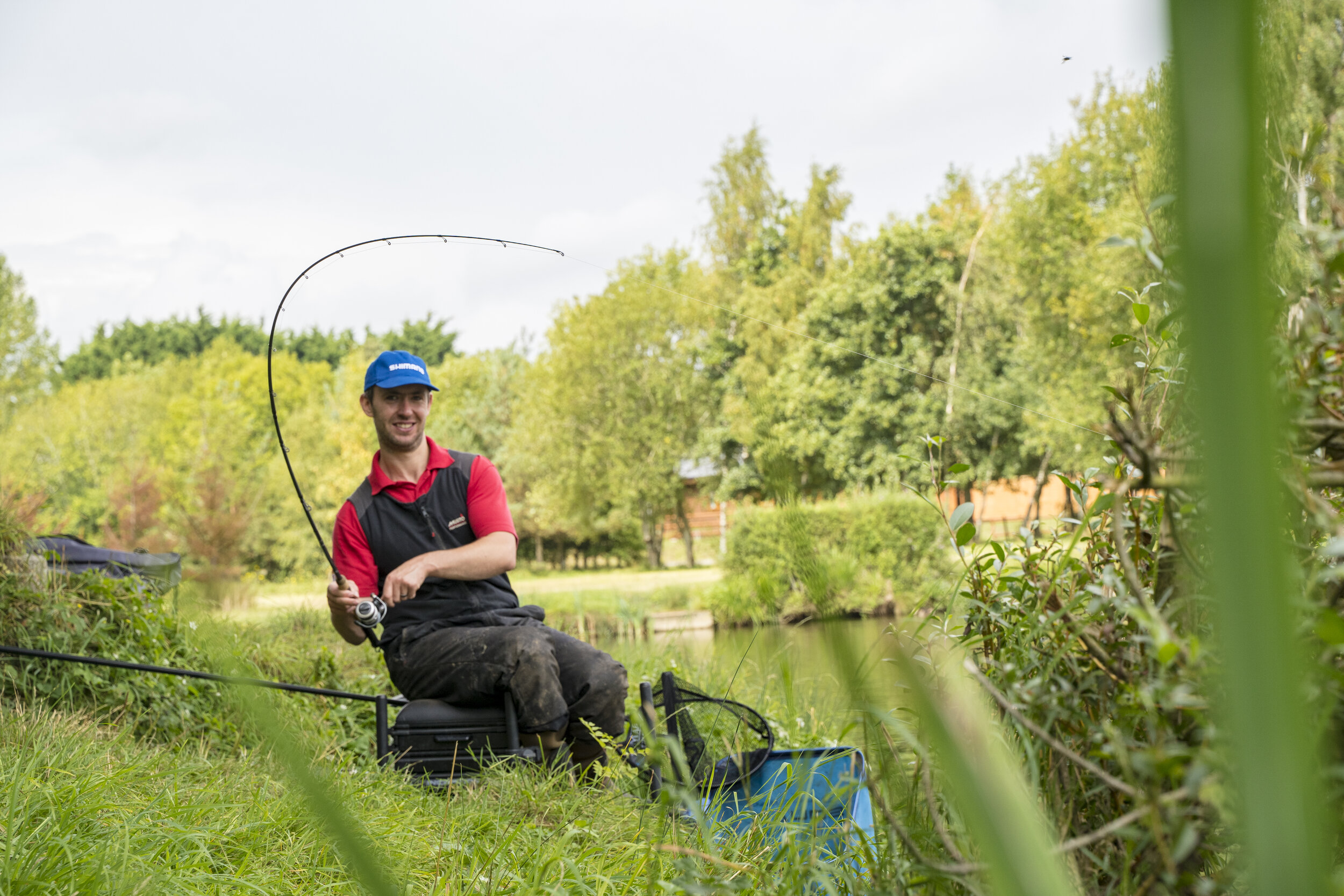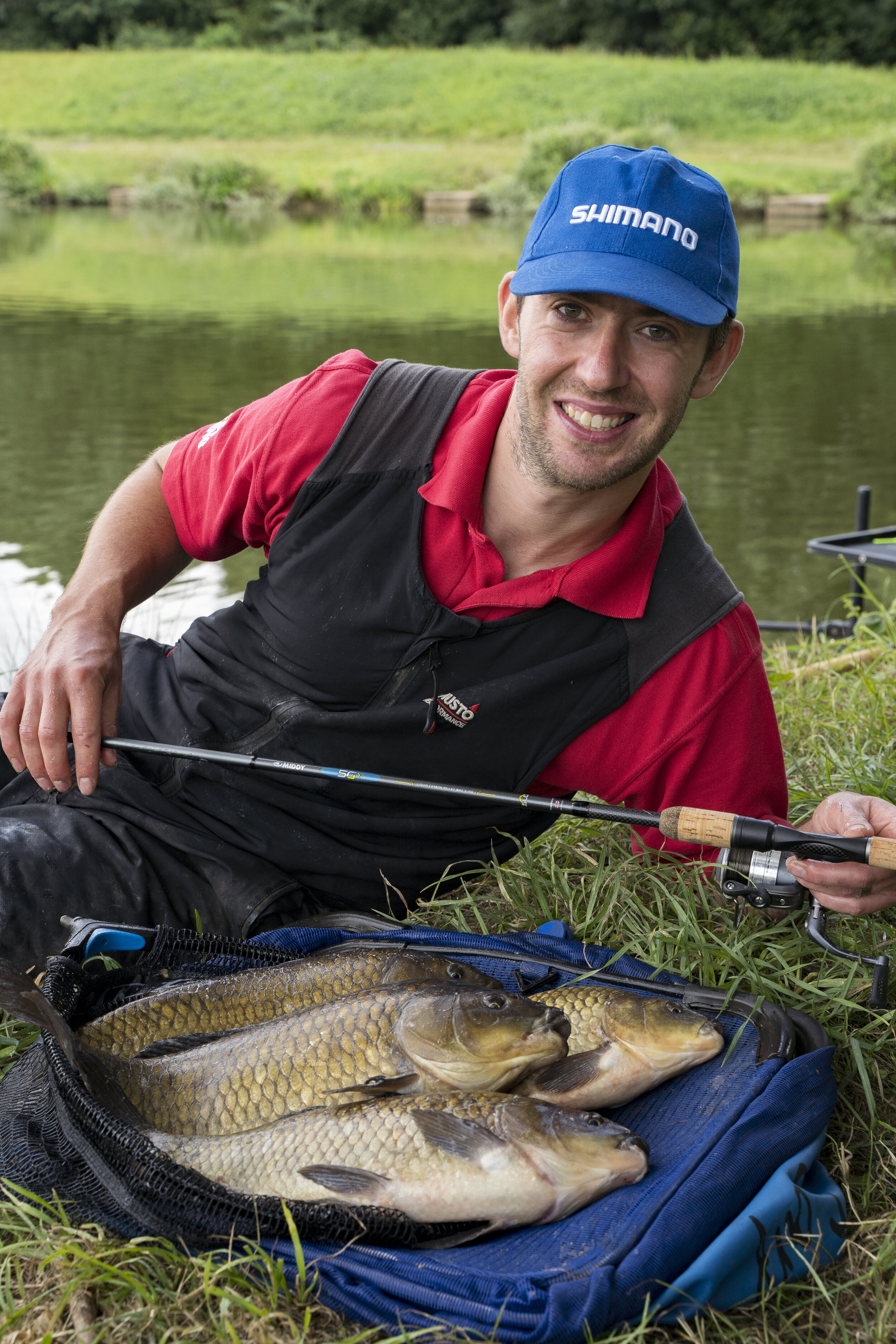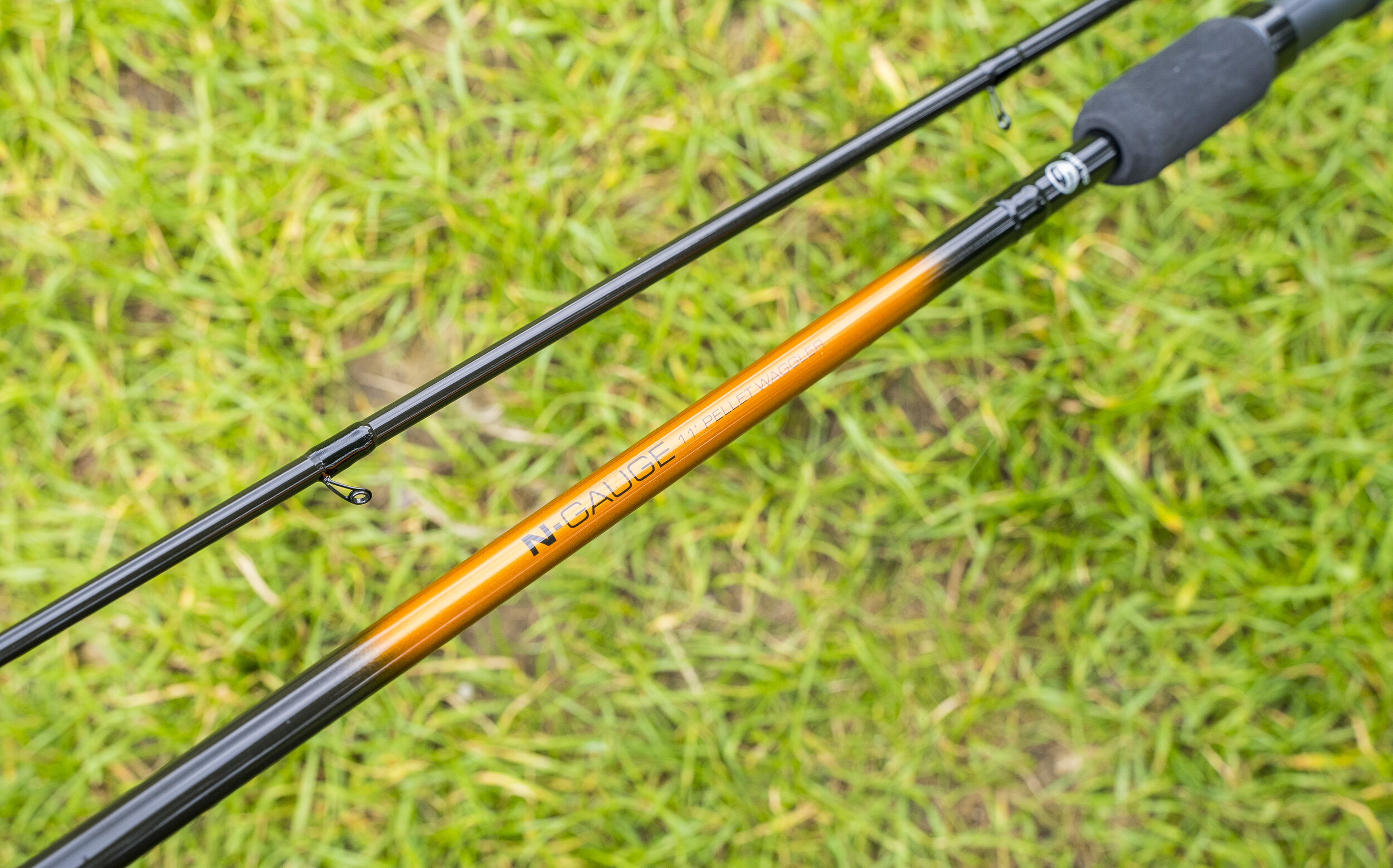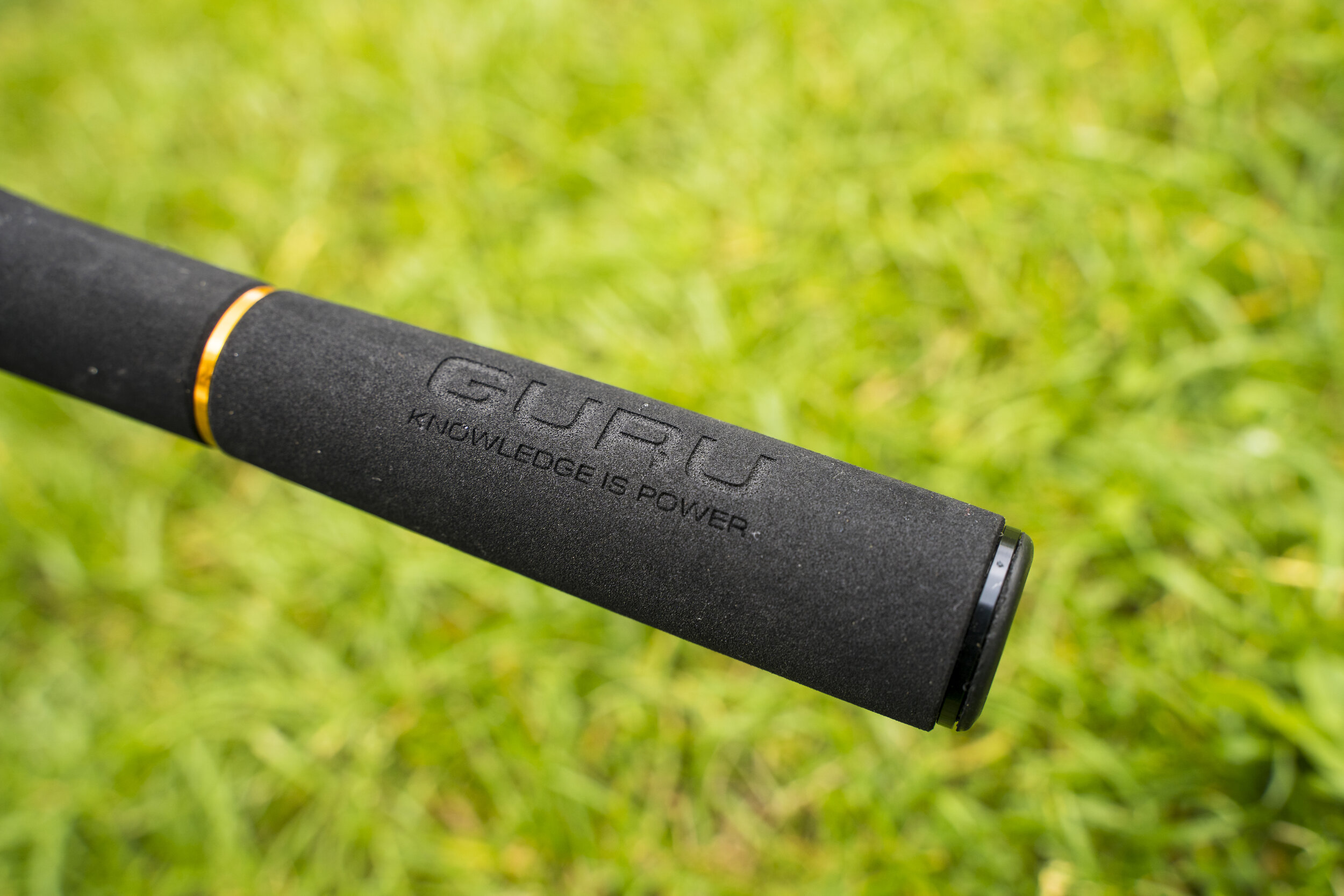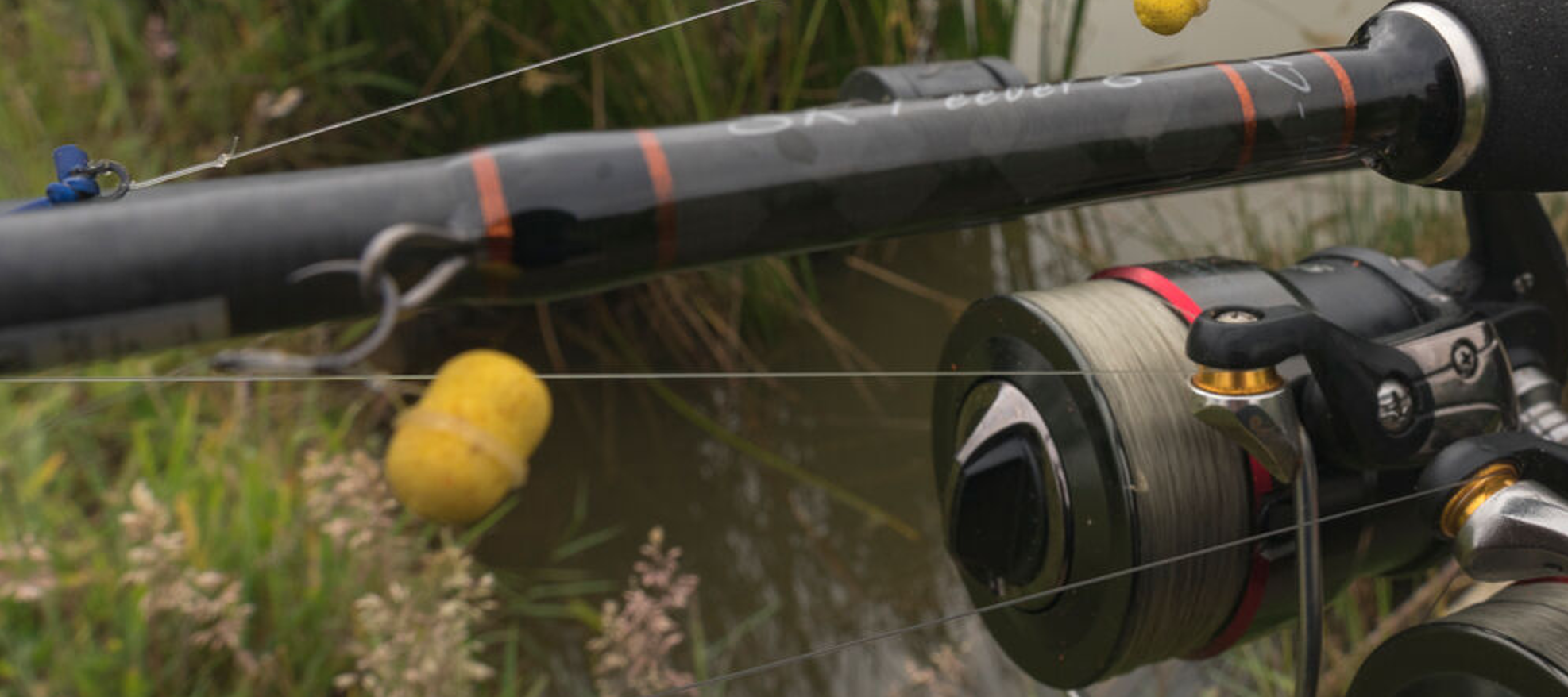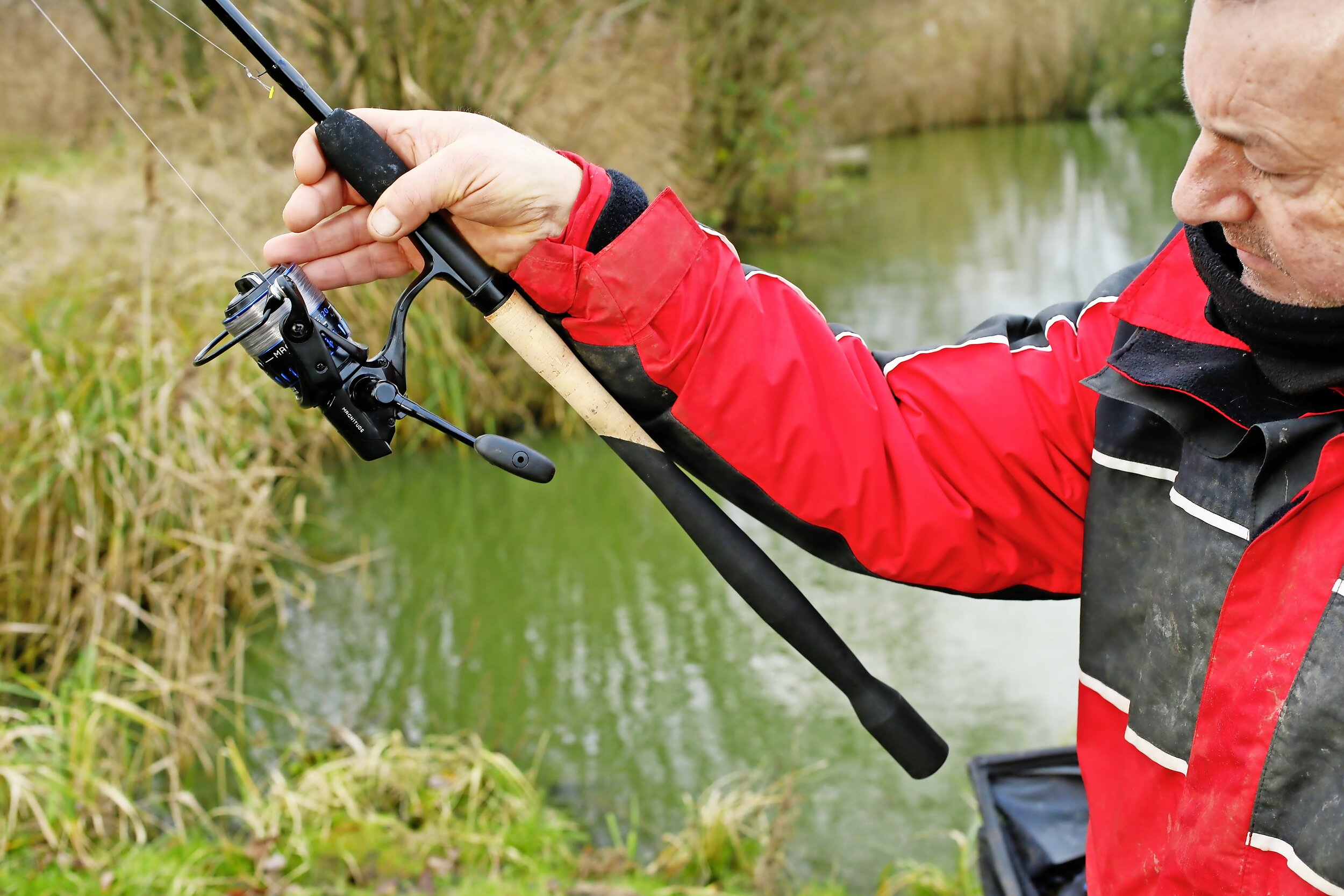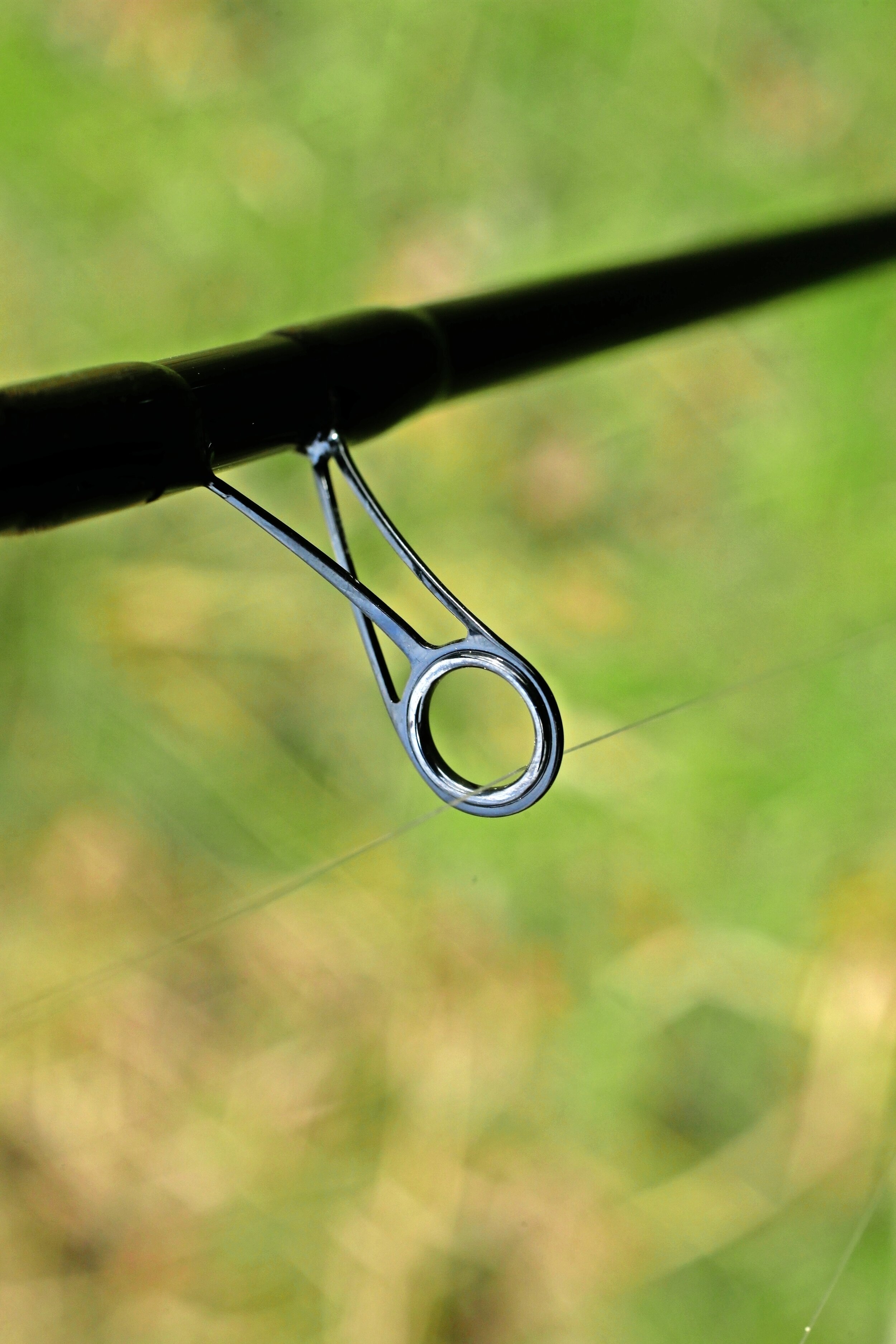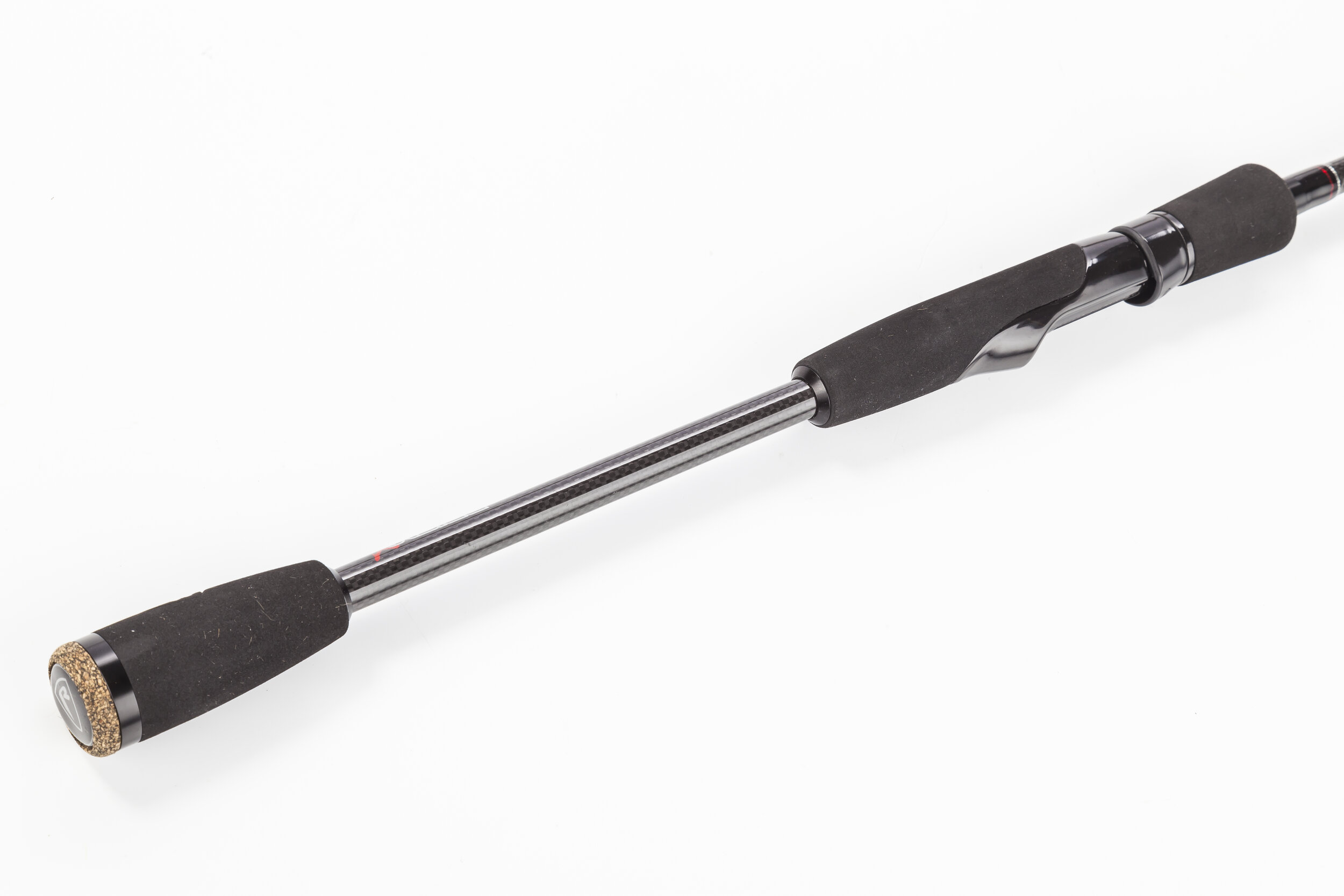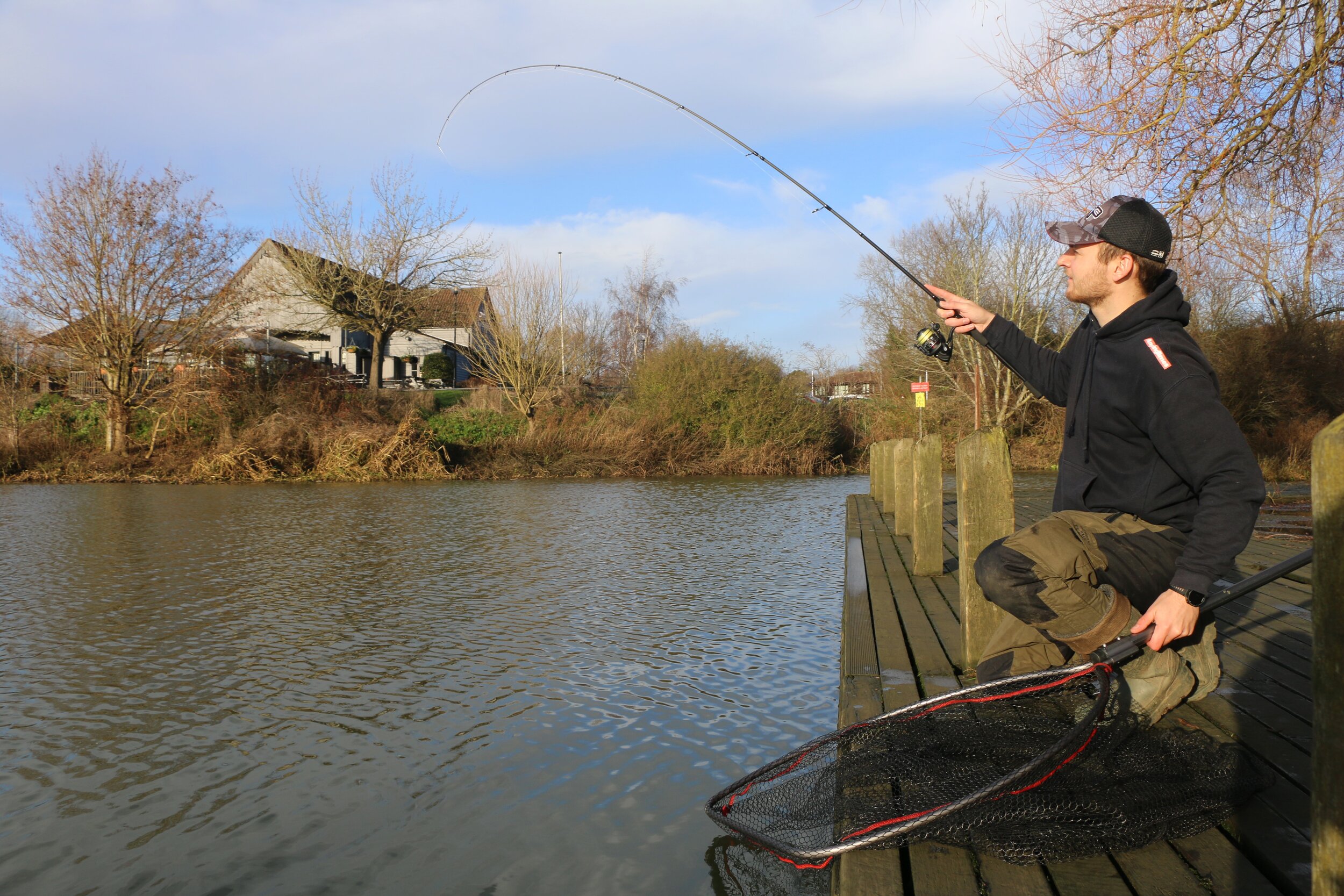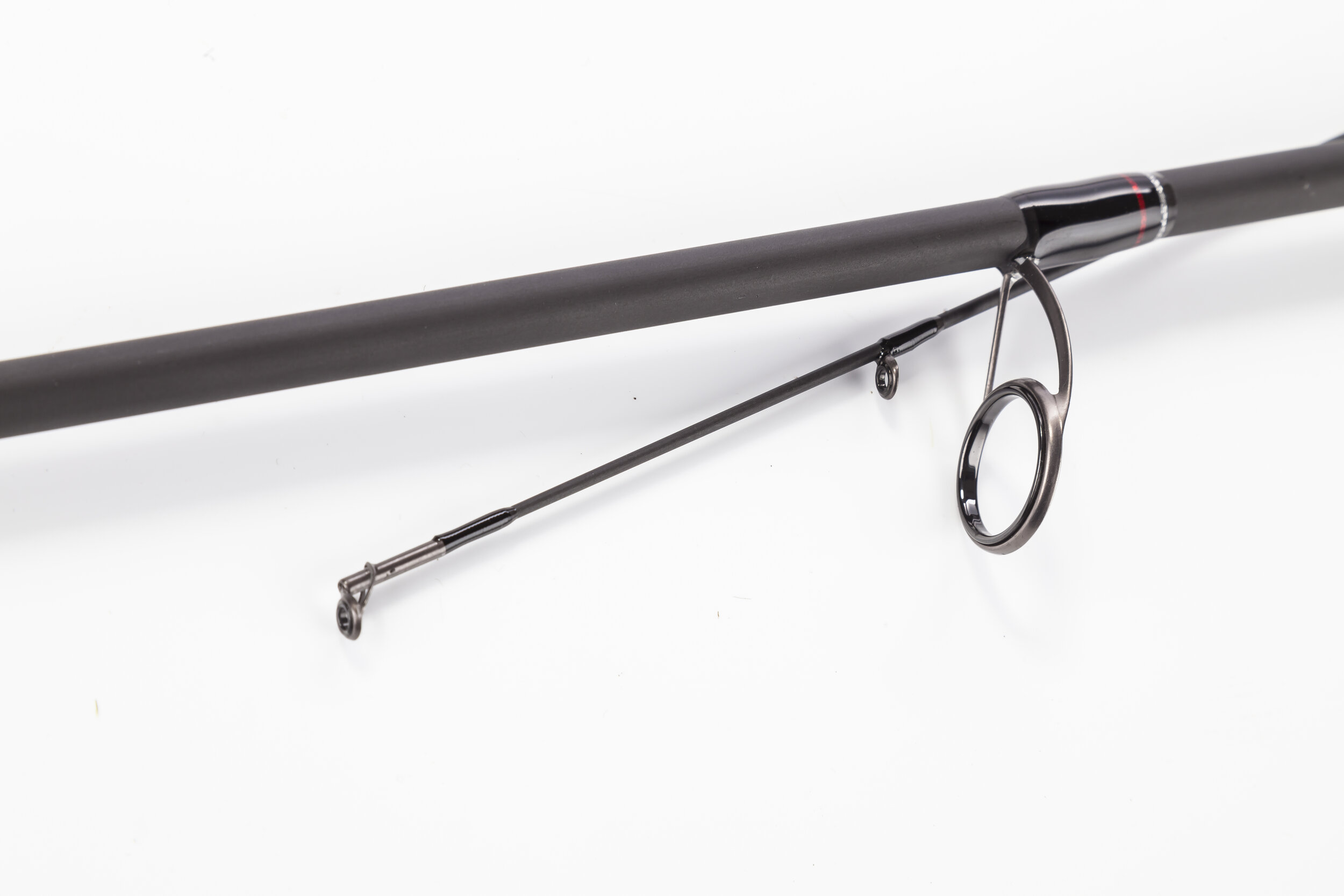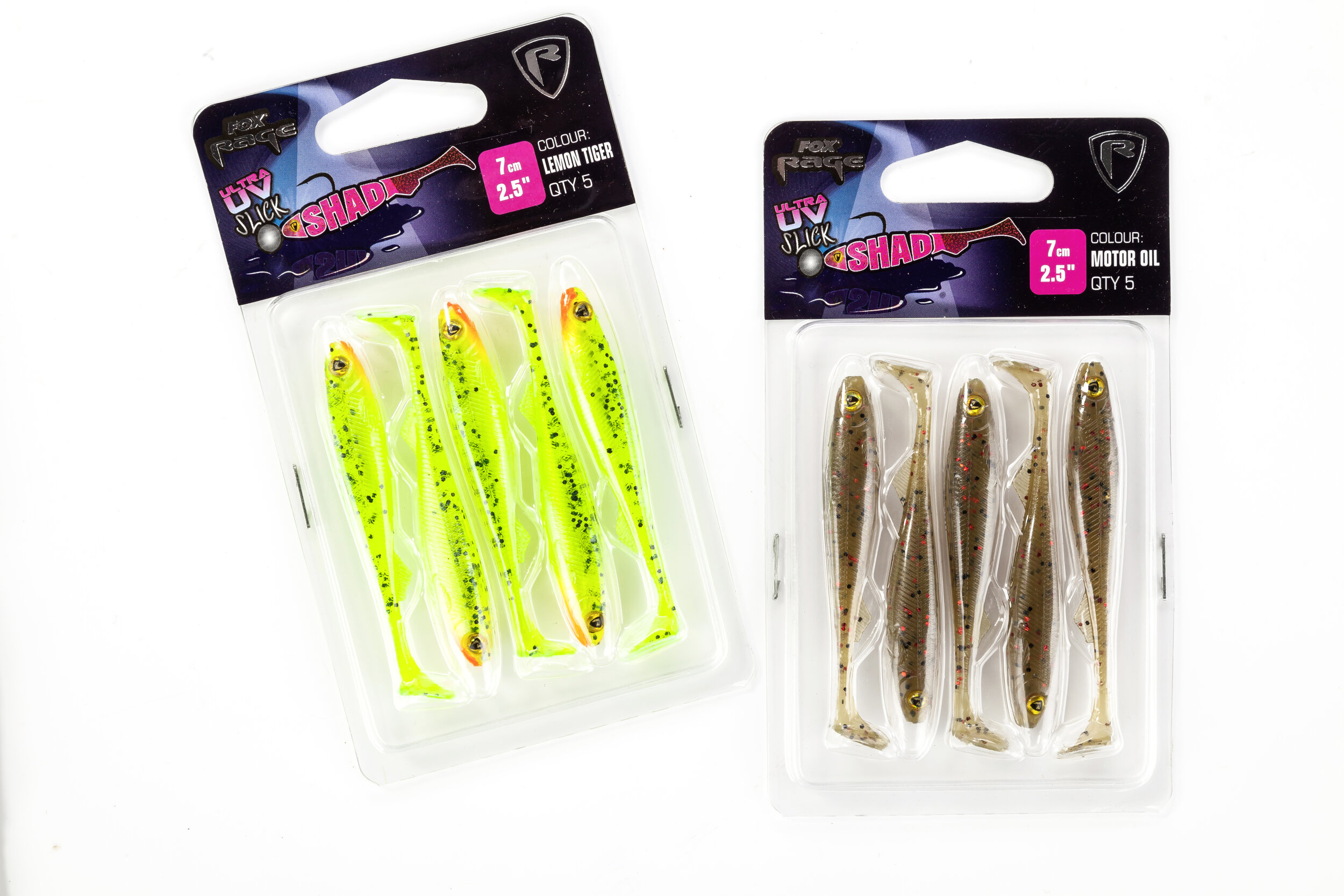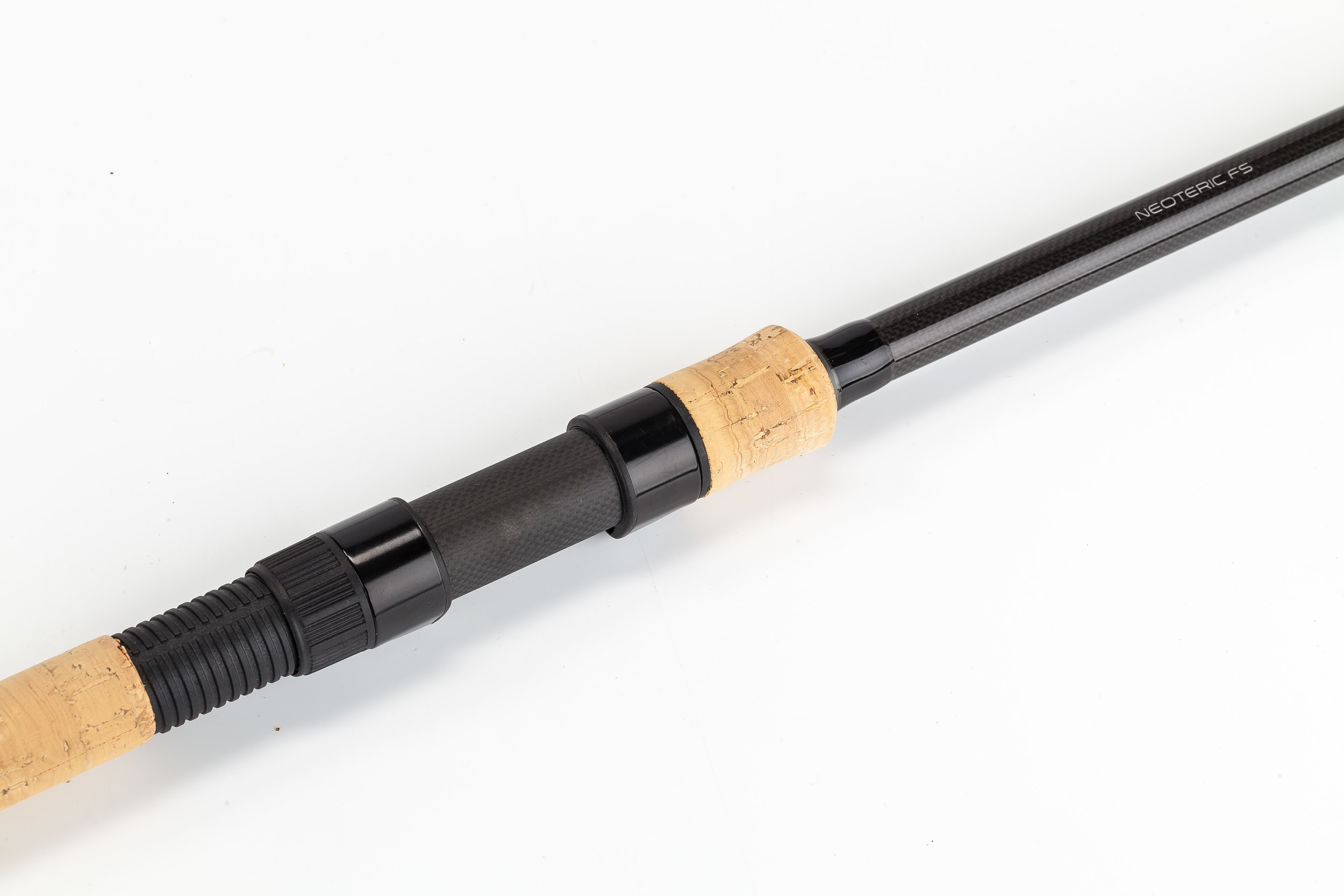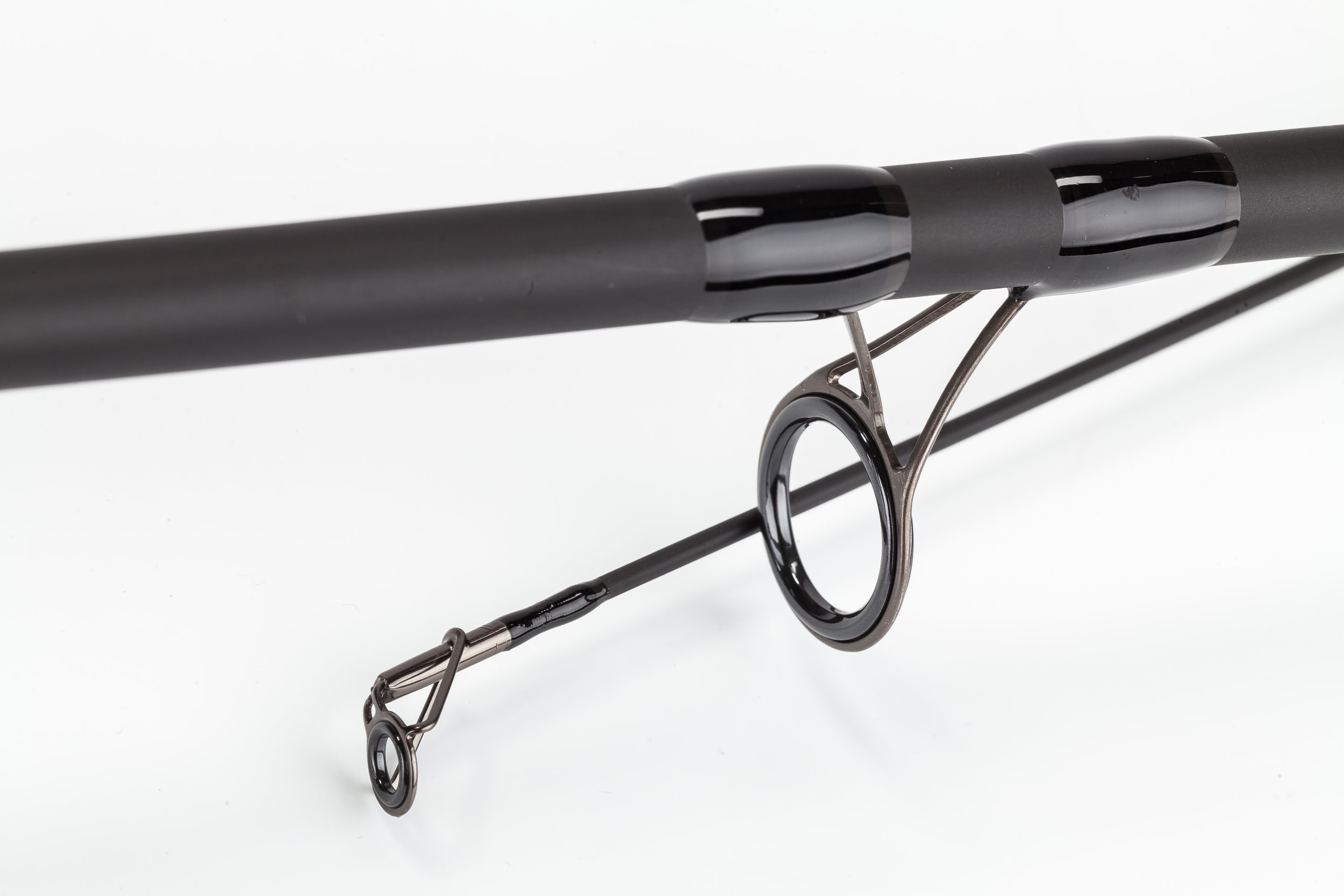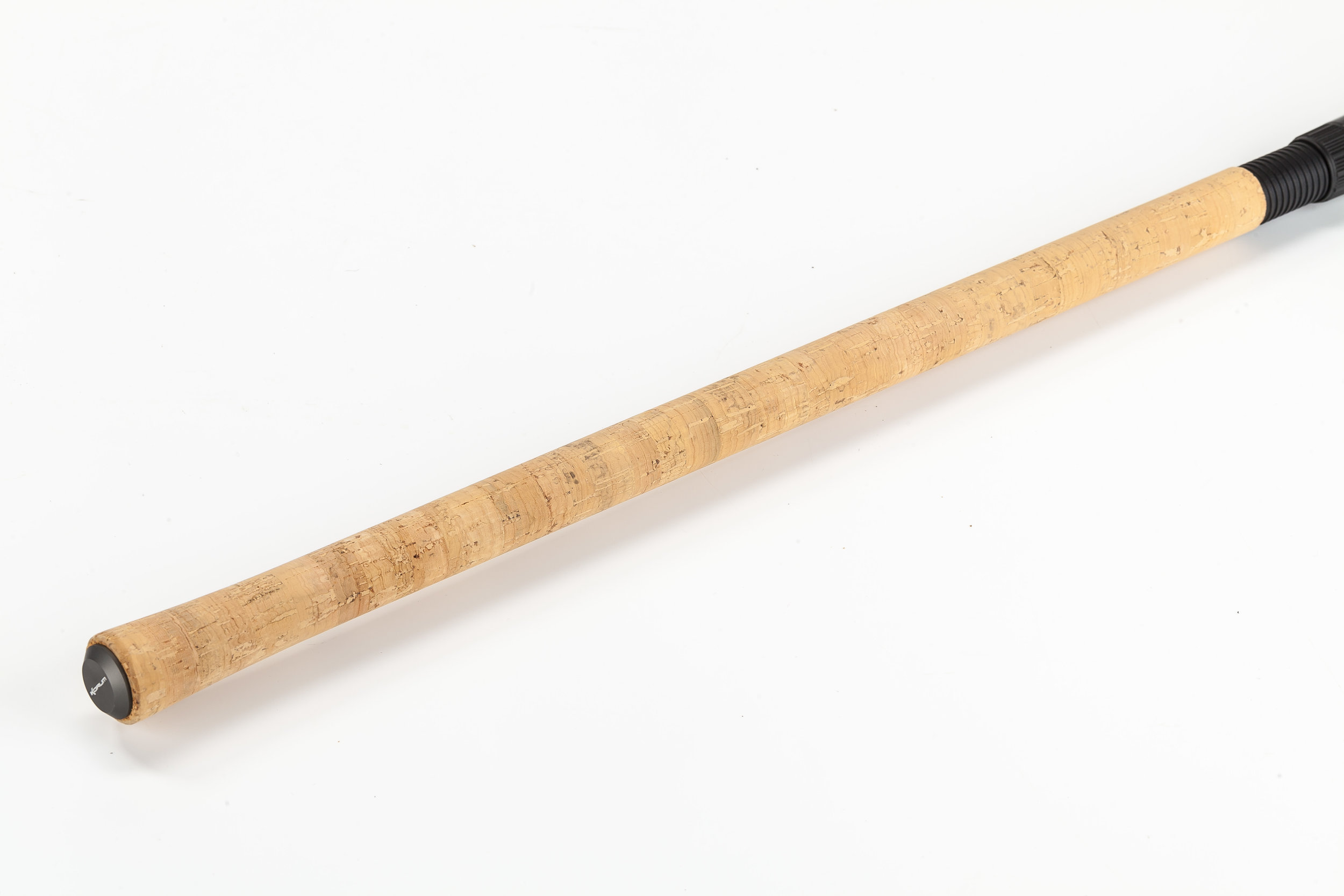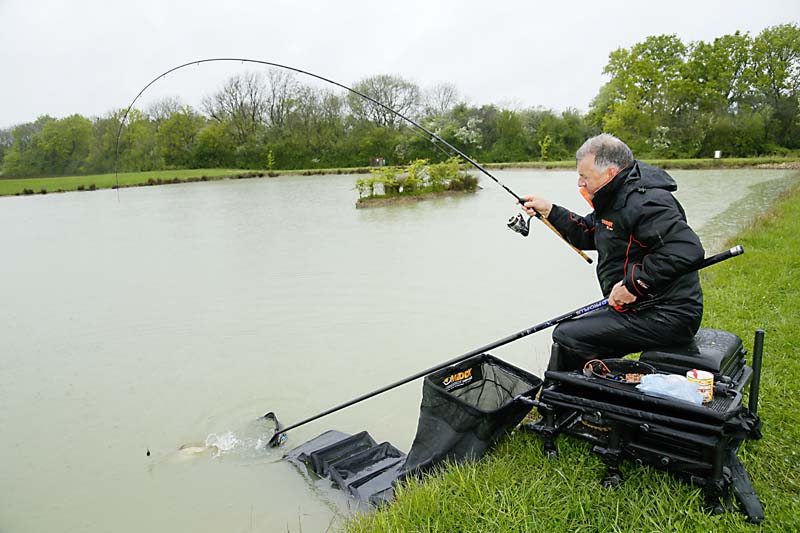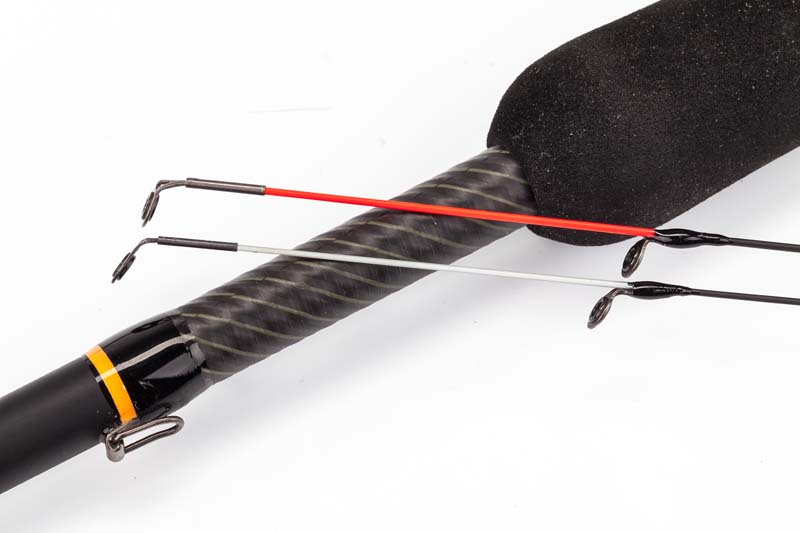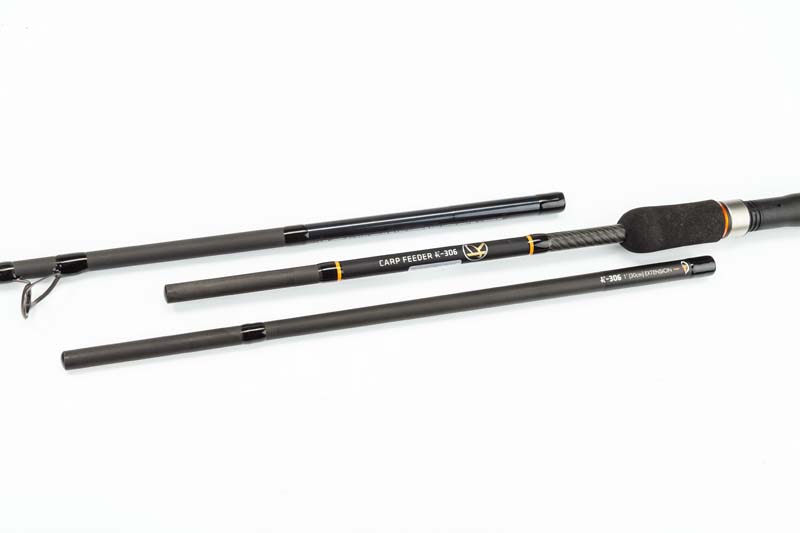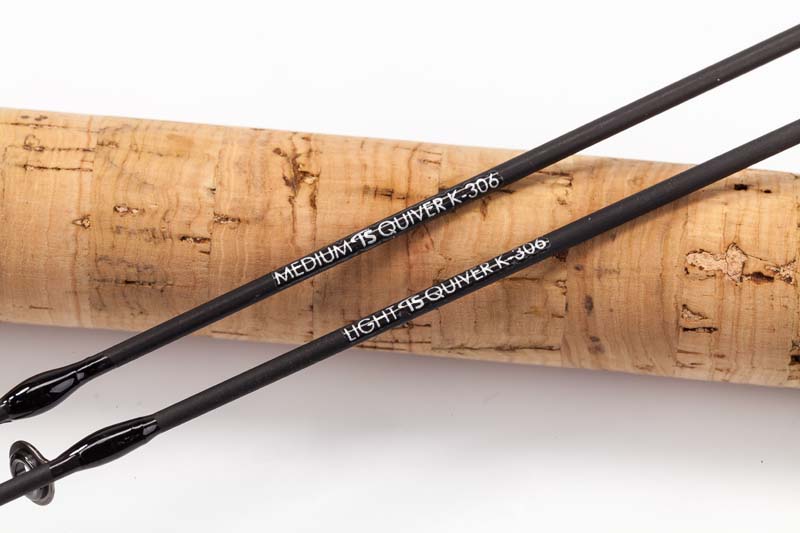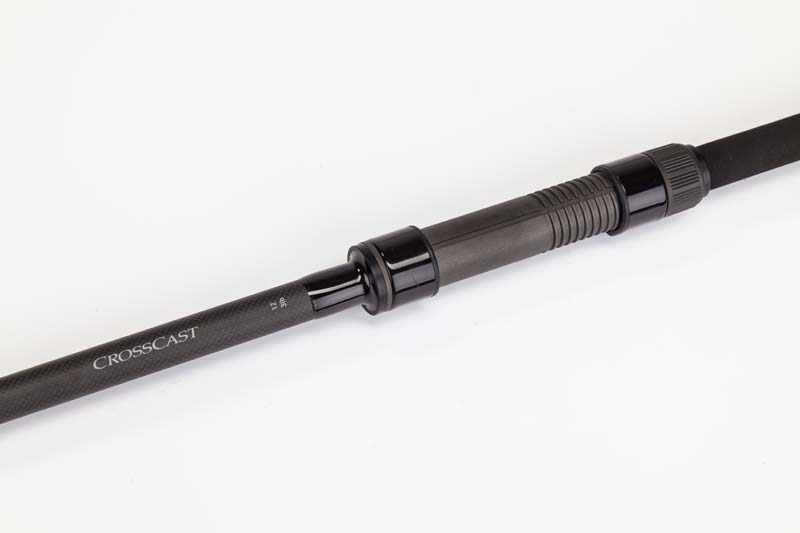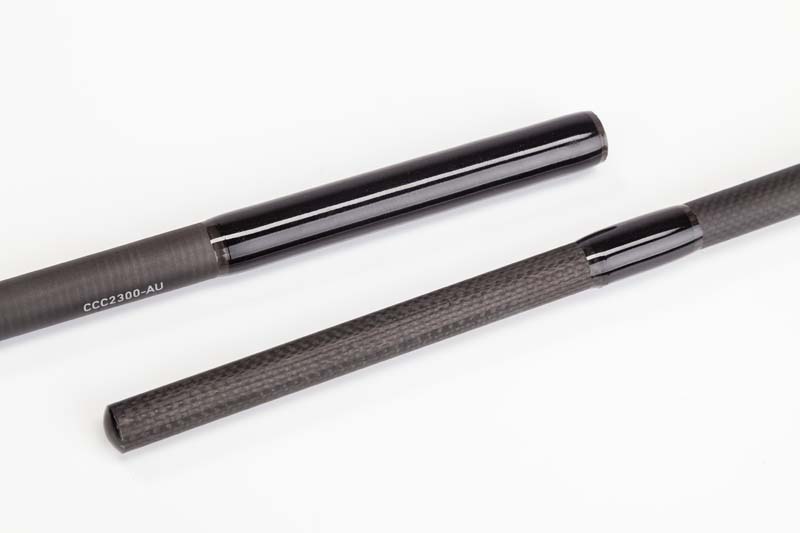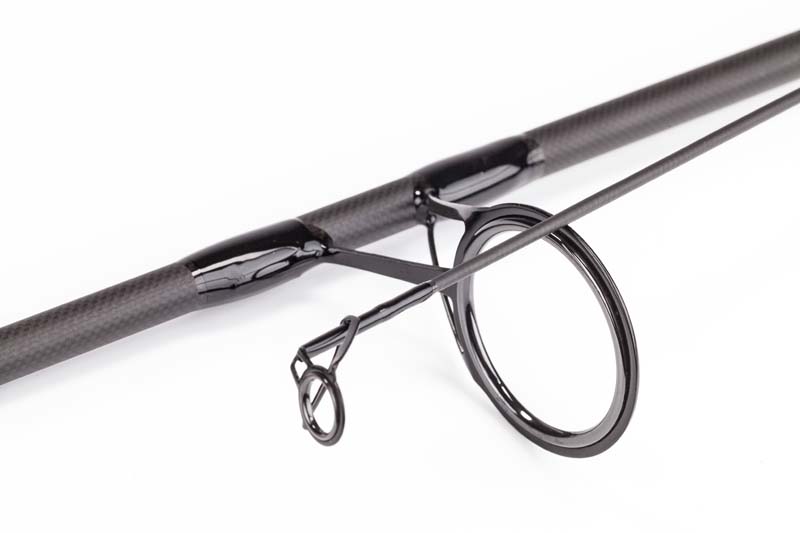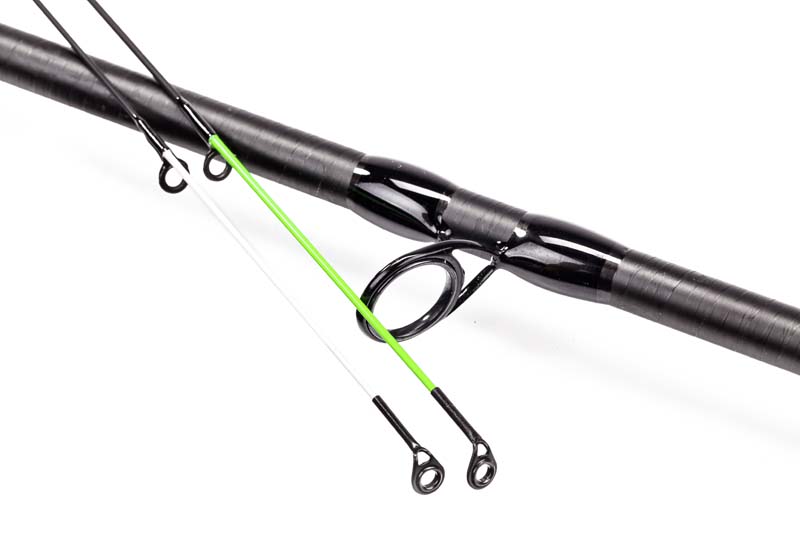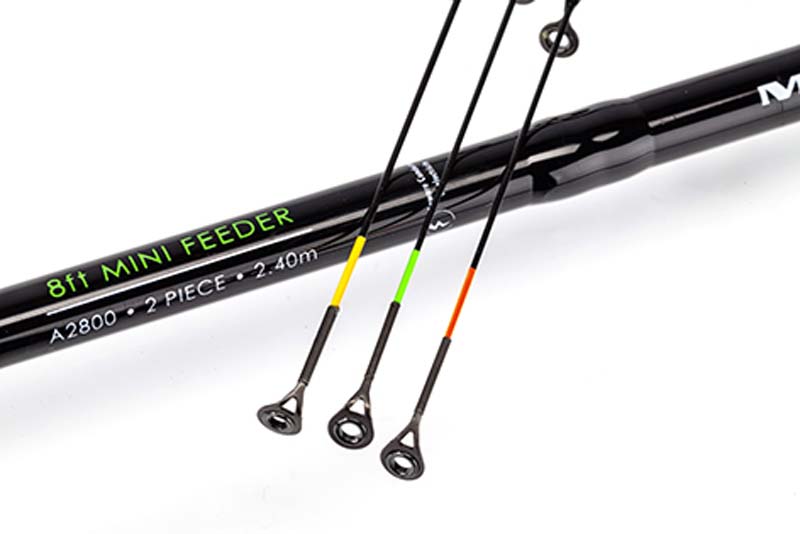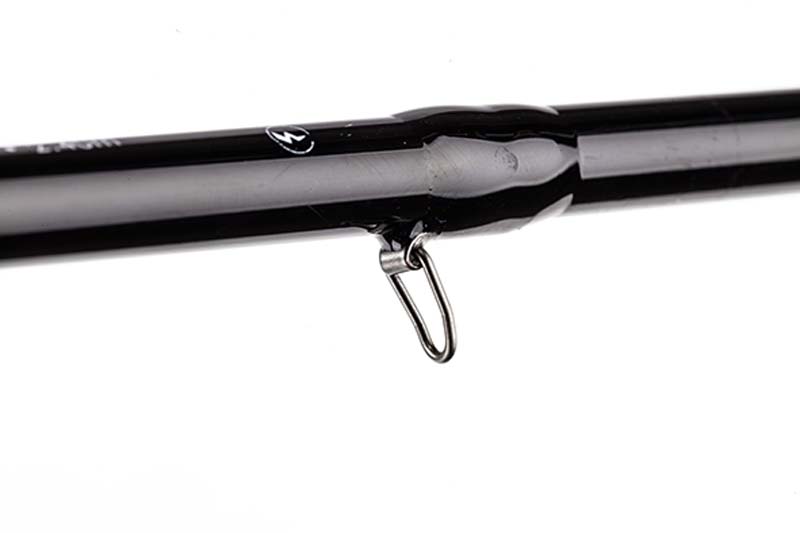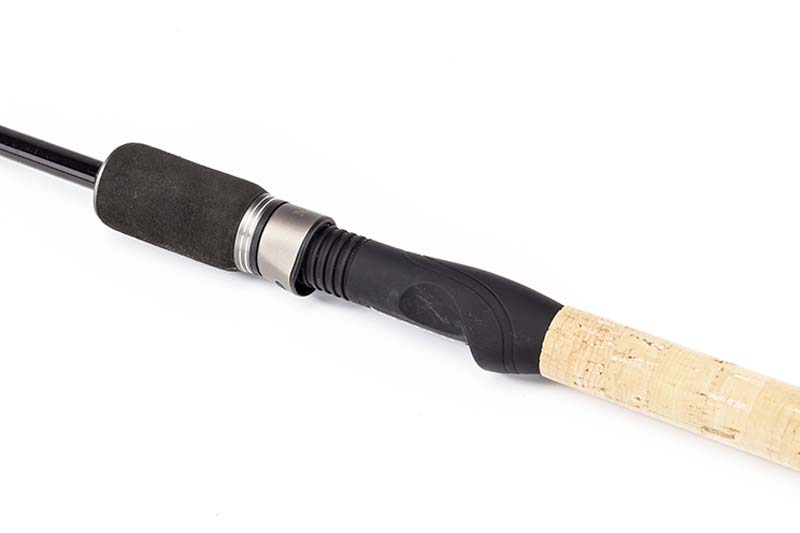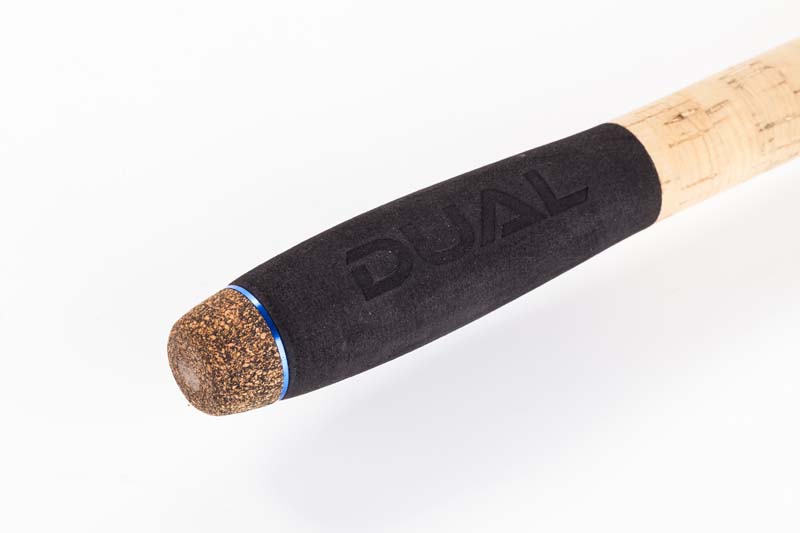Korum Trilogy Triple-Top Rod Review
Nobody in these topsy-turvy times should have been too surprised that one of the warmest weeks of the year fell slap-bang in the middle of September.
The poor old fish, having finished their nuptials, saw water temperatures on the rise once again – all very bizarre!
We now appear to be getting all four seasons in one month, and the recent hot and sunny spell has seen the fish, especially the carp, all back up on the surface.
All of which leads me nicely to this week’s live test. What better to tackle anything the weather throws at us, good or bad, than Korum’s recently released Trilogy rod? Handily, the company’s first-ever triple top fishing tool covers most specimen fishing situations.
Not that multi-purpose rods are anything new – your Auntie Maud’s old Grattan catalogue used to sell them – but they were truly hideous things, claimed to suit fly, match, pike and boat fishing but rubbish at all of these.
The new Trilogy is an altogether different kettle of fish, with a steely butt section and three interchangeable tops. These are rated to 1.75lb and 2.2lb test curves, and there’s also a Power Quiver option. The carbon weave construction adds strength where it counts, and a slimline cork handle with compact reel seat is all very stylish.
The medium-fast casting action will cope with all styles of specimen feeder fishing and legering situations.
The new Trilogy rod has three interchangeable tops
I’d originally planned to run the rule over Korum’s Trilogy on the Trent, using it for chub on the float and barbel on the tip.
To be honest, there isn’t anything particularly new about multi-purpose rods for river use. Plenty of twin-tops offer quiver and Avon options, but the Trilogy offers the angler a lot more versatility than that.
So, with the sun shining, my mission was to try three very different tactics in one day. First I’d target carp on floaters. Then it would be bream, tench and anything else that came along using a Method Feeder. Finally I’d switch to pellets and a pop-up in a PVA bag rig to see if I could snare a proper unit.
My destination for this marathon was Oxfordshire’s magnificent Clattercote Reservoir just outside Banbury, home to a truckload of bad-tempered and hard-fighting carp, shedloads of bream, and some really big tench.
Once in the car park, I quickly loaded my kit on to the barrow and headed to the shallow water at the top end of the reservoir – even shallower than I’d expected - and kicked off my session.
TACTIC No1 - Floater fishing
AS I suspected, there were plenty of decent-sized fish cruising the upper layers. So my opening gambit of fishing a hair-rigged mixer hookbait on a size 12 hook, attached to a 5ft-long length of clear 10lb mono hooklength and a 20g controller float, looked nailed on for a quick result.
The Trilogy’s 1.75lb top section is ideal for floater fishing
I’d chosen the Trilogy’s lighter 1.75lb top section for my floater tactics, as its slightly tippy casting and lightish test curve are ideal for what is basically heavy float work – you could also use this section to run a top-and-bottom Avon float down a river.
At 20g, the controller float was well within Korum’s suggested casting capabilities, maxing out at 5oz (141g). To me, that’s a tad optimistic and I wouldn’t want to load the 1.75lb tip with more than 3oz (85g). It does, though, have plenty of whip and would be ideal for heavy float and light lead tactics.
TACTIC No2 - switch to the METHOD
THE Power Quiver tip does exactly what its name suggests. It has a 1.5lb test curve and is finished off with an integral 19ins solid glass quivertip that I’d rate to around a 3oz-4oz test curve, making it ideal for pretty much any feeder situation.
The use of a glass quiver is a clever move by Korum, as tips like these have a smoother curvature than carbon, with superb bite detection whether you’re on a lake or a river. I chose a 45g distance flatbed Method and a much lighter 20g flatbed for the live test, and happily the rod handled both with equal ease.
The power quiver tip is a great tool for method fishing
The blank’s fast casting action makes this a very good two-piece tip rod that will handle a variety of angling situations. I can also vouch for its distance casting capability, as it will propel a feeder or lead up to 80 yards with very little effort.
TACTIC no3 - Mid-range PVA BAG
NOW it was time to step things up a gear to the 2.25lb test curve top section. I decided to fish this with a solid PVA bag full of micro pellets, a 2.5oz bag lead, and 12mm pop-up hookbait on a hair rig.
The heavier top section does dampen down the rod’s perky, fast action and it’s not really a distance-casting top.
But it does allow the use of heavier reel lines and terminal tackle when big fish are the quarry.
For me, the rod is ideal for mid-range PVA bag and straight lead tactics up to around 75 yards out. I found the blank’s slow, almost lazy progressive action quite interesting, and concluded it would be an ideal rod for targeting big bream or tench in snaggy/weedy swims where hook-pulls often occur. The action has a dampening feel with plenty of pulling clout.
The 2.25lb test curve tip is for proper carp fishing with heavier lines and leads
What’s the final verdict?
Korum’s Triple Top is one of a kind!
THIS rod can’t be easily rated against its nearest rival, as to the best of my knowledge there isn’t one. So have the guys at Korum truly cracked the three-rods-in-one conundrum? Well, what we have here is a really clever rod that is nicely finished, looks the part and clearly has many uses in the specimen angling arena.
What’s more, it comes at a price that makes it possibleto own a pair of Trilogies for less than what you’d pay for one traditional feeder rod.
So given the trend towards multiple rod set-ups, maybe you should push the boat out and buy three!
Price: £99.99
Push the boat out and buy three, you won’t regret it!
Garbolino 9ft Synergy Picker Rod Review
Short rods have become all the rage in recent years.
A large proportion of today’s commercial lakes have the main features at between 15m and 30m range, and a 9ft tool is ample for reaching that kind of distance with ease.
The main benefit of such a short rod becomes evident when you’re playing fish. Get your quarry under the rod tip and the shorter the rod is, the more likely you are to sweep the net under the fish at the first time of asking.
With demand for rods of this length growing, it’s little surprise that ever more manufacturers are ploughing time and money into making new models that fit the bill.
Garbolino has certainly picked up on this modern trend, and its new 9ft Synergy Picker is aimed primarily at those anglers who do a lot of short range feeder and bomb work.
Priced at just under £70, it falls into the category where it will be many angler’s first serious rod. It’s going to be their pride and joy, and they’re going to expect it to perform, feel and look a lot better than the budget starter kit they purchased when just starting out. I can pretty much guarantee that they won’t feel short-changed with this little cracker!
The 9ft Synergy Picker is aimed primarily at those anglers who do a lot of short range feeder and bomb work.
Short range delight
Manor Farm Leisure in Evesham is one of my favourite fisheries, and with short-range work often the name of the game there, it seemed the ideal testing ground for the rod.
A light bomb was threaded on to the 6lb mainline and lobbed 20m out on Ash Pool. The true casting ability of a rod like this doesn’t really come into the equation when fishing at such short range. The true power of the rod would only really be tested if and when the fish played ball.
Thankfully, that didn’t take long, with a big F1 soon snaffling up the 8mm pellet hookbait, sending the reel clutch screaming into life.
It was instantly noticeable that the rod had a good progressive action, and every time the fish lunged in anger, it was absorbed.
That is an important quality when fishing at short range because your whole set-up comes under pressure the split second the hook is set.
The 3lb fish was soon beaten and I hadn’t felt under-gunned. In fact, there was definitely more in reserve should I have needed to pull back aggressively during a more intense encounter with a bigger fish.
Those anglers who prefer to fish further out are well catered for within the range because the Synergy Picker is also available in 10ft or 11ft versions.
It was instantly noticeable that the rod had a good progressive action, and every time the fish lunged in anger, it was absorbed.
All-round promise
Most 9ft rods are developed exclusively with carp and F1s in mind, but the team at Garbolino has tried to make this rod more of an all-rounder.
Three tips have been included – 0.5oz glass, and 0.75oz and 1oz carbon – to provide different levels of bite detection. Stick the lightest of the lot on and the subtle nudges from skimmers and other silvers won’t go undetected.
Three tips have been included
During the test I used the 1oz version. If you’ve ever fished the bomb and pellet at this time of year, you’ll know that you don’t need much sensitivity to spot the rip-roaring bites and a heavier tip helps to set the hook firmly in such situations.
In my eyes, this rod would be equally at home bagging hard-fighting F1s every chuck as it would be on mixed waters where a chunky skimmer could show up one cast and a double-figure carp the next. There’s finesse in its playing action, but it also has a decent amount of backbone in the slimline blank to make sure you are in charge of each fight.
It’s overall appearance is admirable too, with the mixed cork and EVA handle and graphics on the blank helping it to really look the part.
There’s also a few little add-ons that provide convenience, such as the hook keeper ring and a guide on the blank to remind you of what size feeders are appropriate for use with the rod.
The hook keeper ring is a nice add-on
If you’re new to the sport and have come to the conclusion that fishing is likely to become a lifelong obsession as opposed to a post-lockdown fling, this rod will certainly provide that step up in quality you’re after.
RRP: £69.99
This rod will certainly provide that step up in quality you’re after.
Middy 5G Pellet Waggler rod test
I’LL START this review with a confession. Pellet waggler fishing isn’t something that I used to devote much time to, but over the past few months of balmy summer weather I realised I’d been missing out big-time on what is clearly one of the most exhilarating of all tactics.
The anticipation builds the moment the float plops into the water, and that excitement is often followed by an aggressive bite moments later.
Next thing you know, the clutch on your reel is going into overdrive and the rod arches over as a disgruntled carp or F1 does its best to shed the hook.
Clearly, the rod you are using can make all the difference between winning most of these battles or coming back empty-handed.
When the new 11ft Middy 5g Pellet Waggler rod was put into my hands I instantly pencilled in a session at a venue I know would respond well to this high-octane tactic – Manor Farm Leisure in Worcestershire.
I knew what I wanted from this rod, but would it come up trumps? There was only one way to find out…
The rod arches over as a disgruntled carp or F1 does its best to shed the hook.
LAUNCHING INTO ACTION
With the rod rigged up and a couple of pints of 8mm pellets on my side tray I was all set to try and extract a few massive F1s – they run to over 5lb – from Ash Pool.
They love to linger shallow out in the middle but they’ve been caught countless times and can be moody. With a small 3g pellet waggler on the line I went for a 30m chuck and it landed exactly where I had planned it to. It was then a case of feeding a few pellets every chuck, casting over the top and, if there was no response within 10 seconds, repeating the sequence.
As it happens, to begin with the fish were slow to respond to the trickle of freebies falling through the water column, but I wasn’t complaining too much as it gave me the chance to get to grips with the rod’s casting capabilities.
Accuracy was not an issue, as I could plant my small waggler on the button without breaking sweat. There was clearly a lot more fuel in the tank, and had I wanted to chuck a beefier float there was ample power in reserve to do so.
Accuracy was not an issue, as I could plant my small waggler on the button without breaking sweat
The weight of the rod barely registered in my hand, which gained it more brownie points because a light rod is essential for such an energetic tactic where you are casting so often.
Eventually the constant rain of pellets drew a response, with fish swirling at every pinch of bait that landed. The float duly dipped and it was time for the rod to earn its battle colours.
THE PERFECT ACTION
The fish surged off the moment it realised it had slipped up. The softly-set clutch got to work and the rod took on a healthy bend.
A good pellet waggler rod needs to be soft enough to absorb sudden lunges yet have enough grunt to let you take control. With the first fish safely in the net I felt confident it had both qualities in abundance.
A few bigger F1s fought even more ferociously later in the day and the rod handled them faultlessly.
A few bigger F1s fought even more ferociously later in the day
Had I hooked a double-figure carp, I feel sure that a small yet significant design feature of the rod would have helped me land it. The woven carbon area next to the handle prevents the rod bending too much during particularly intense fights in the heat of summer, but I’d be equally happy using it on the deck in the colder months, when bites are hard-won and every fish counts. Its soft action would, I’m sure, keep losses to a minimum. Today the Middy 5G Pellet Waggler had put me in the driving seat, allowing me to cast accurately and then extract anything that took the bait with relative ease.
Safe to say this rod looks the part
Rod cosmetics never caught anybody any more fish, but there is something of the tackle tart in us all – and if the aesthetics catch your attention in a shop there’s a much better chance you’ll part with your hard-earned cash!
Safe to say this rod looks the part. Starting at the reel seat, it seems a little unusual as it’s slimmer than the rest of the handle, but put your hand over the top of the reel and it all clicks into place to make holding the rod a pleasure.
Graphics are neatly etched into the blank, the eyes are appropriately sized and spaced throughout, and little extras such as a hook keeper add to its overall appeal.
Give this beauty a place in your holdall and you’ll have a tool that will never let you down when the bites are coming thick and fast!
A productive rod test!
Price: £99.99
Guru 11ft N-Gauge Pellet Waggler rod review
THERE are so many pellet waggler rods around nowadays that choosing the right one for this popular summertime tactic can be quite taxing.
Their quality and performance, and indeed their price, varies enormously across the various manufacturers.
Kicking off with a brand that has a good track record, then, makes sound sense, and few can rival Guru in this respect.
The company has many excellent products, most of which (including this rod) are aimed at catching big weights of big fish. In this heady atmosphere you want a rod that won’t let you down!
Guru’s new 11ft N-Gauge Pellet Waggler (and its companion 10ft version) promises a balanced action, plenty of power and accurate casting. It’s also comfy to hold, and because pellet waggler fishing involves constant casting and feeding that’s very important.
A balanced action and plenty of power
“But why can’t I just use my normal float rod?” I hear you ask. Well, standard three-piece float rods are designed to catch silverfish using light floats, fine lines and small hooks. Pellet waggler rods are built to chuck an altogether heavier payload – this week’s live test candidate has a recommended maximum casting weight of 15g, which covers just about any size of float you will ever need, while its progressive action handles bigger fish.
Two equal-length sections mean the rod can be carried on to the bank all rigged-up and ready to go.
Two equal-length sections
So, if you fancy having a go at pellet waggler fishing but don’t want to invest too much of your hard-earned on a rod that only really comes out when the sun shines, Guru’s N-Gauge 11-footer will be your ideal fair-weather companion, and I’ll tell you why.
A lot of rod for your cash
First up, if you shop around you’ll find this rod for just under £100, but its impressive array of furnishings belie its price tag. The handle is part cork, part Duplon, offering a firm but comfortable grip, and it’s dressed in super lightweight single-leg reversed guides, strategically positioned along the quality blank to maximise casting and fish-playing performance while minimising the risk of tangles or frap-ups.
Part Duplon handle
All good on paper, but how would it actually perform? To find out I visited a new venue for me, the day-ticket Whetstone Gorse fishery just outside Leicester.
Enter the spacious car park, and on the left is a pretty oval-shaped lake with a large mature central island covered in trees and shrubs.
It was only a few paces from the car to the lake. I could see plenty of carp slowly cruising the upper layers, although most were close to the island cover, and there were a few proper lumps in their turnout.
By the time I’d carried my kit the few yards to the chosen swim the sun had gone in, it was all grey and misty and it had started to spit with rain. Ten minutes later the heavens opened – not exactly ideal pellet waggler weather!
The fish I’d spied moments ago had vanished from view, but when the rain eased, they were back again, and that’s how the day progressed.
They wouldn’t come to the constant feeding pattern normally so successful with this method. Instead they hugged the far bank, and every now and again I’d see a flash as a carp swirled at a falling pellet.
Pinpoint casting accuracy was essential, and the really tippy action of this Guru rod proved ideal for whipping out a smaller lighter float. Every now and again I’d get it spot-on, the float would land silently and the plop of the pellet hookbait right on the carp’s nose would be too much to resist. Basically, this was dobbing with a waggler.
‘just right’ in so many ways
I’ve handled enough rods of this ilk to know that the Guru offering has plenty of oomph in reserve, should I have needed to cast a heavier float further than I did. In practice, of course, pellet waggler rods need only cast as far as a catty can fire an 8mm or 11m pellet.
A fallen tree in my swim at the by now even wetter Whetstone Gorse gave me the chance to test the rod’s stopping power to the max, which happened every time I hooked a fish, and I landed them all bar one – enough to convince me that the 11ft Guru Pellet Waggler is very much a Goldilocks rod… ‘just right’ in so many ways.
Price: £104.99 (but shop around to get it even cheaper)
Free Spirit Hi-S 8ft Feeder rod review
This flagship 8ft rod is ideal when casts of 20m-25m are called for. Like all short rods it’s relatively easy to compress, making it super-accurate even at those tricky shorter ranges.
The Free Spirit Hi-S 8ft Feeder rod is a classy product
In fishing terms, this means you shouldn’t be afraid to cast it properly overhead as you would a normal length feeder rod.
As a top-end model it’s furnished with high quality anti-frap guides, has a cut-away Fuji reel seat that’s said to give the rod more feel, and is supplied with two unique Free Spirit hollow carbon quivers of 0.5oz and 0.75oz.
Supplied with two unique Free Spirit hollow carbon quivers of 0.5oz and 0.75oz.
Longer than standard push-in quivers, these are far less prone to movement post-cast, and they give the blank a highly distinctive fish-playing action.
I’ll make no bones about it, like other models in Free Spirit’s award-winning Hi-S range this is a classy and well-bred rod.
It has plenty of feel when playing a fish, and a casting potential that belies its modest 8ft length. It also packs more than enough backbone to dissuade a big carp from getting underneath your platform.
Price: £269
Free Spirit CTX 8ft Short Range Feeder Rod Review
As its name suggests, the CTX 8ft Feeder comes into its own when accuracy of cast is more important than chucking great distances, making it the perfect rod for snake lakes, small commercial ponds, canals and most short-chuck venues.
It’s equally useful for straight lead tactics just beyond the pole line, or as an alternative to the pole itself when high winds make other options impossible.
The unique action powers up the blank from tip to butt, and an anti-locking fighting curve allows light terminal gear to be used for big fish.
The two-piece blank is of quality carbon, with a Bi-Axis weave. Features include Fuji High Stand Off match guides, original Fuji VSS17 lock-down reel seat and a cork handle with EVA thumb grip. It comes with 1oz and 2oz carbon quivers and another glass tip of 0.75oz.
It comes with 1oz and 2oz carbon quivers and another glass tip of 0.75oz
A great all-round rod, and I wouldn’t hesitate to have one in my holdall. If you like your rods with a bit of action, you’ll love the CTX, and it’s ideal for hooklengths down to 0.10mm and small hooks.
Price: £114.99
The CTX is the perfect rod for snake lakes
Preston 10ft Supera SL feeder rod review
NOT all rods are designed to launch a bait over the horizon – and Preston Innovations’ two new Supera SL Feeder rods are the fishing equivalent of middle-distance runners.
Both the 10ft and 11ft versions deliver those shorter casts when bream, roach and skimmers are the target.
A soft, seamless through action prevents hook pulls that can lose you a match, yet the rods double up as the perfect winter commercial fishery tools for F1s and carp on maggot feeder and straight lead tactics.
That much I’d already been told through reading the blurb, but to confirm these claims I treated myself to a day’s live testing of the 10-footer on Decoy Lakes Fishery near Peterborough.
The famed Beastie Lake plays host to plenty of skimmers and roach, while its gravel bottom is paved, not with gold but with F1s, barbel, and a truckload of fit and fat carp. However, like many fisheries that get bashed by matches all weekend, Monday is go-slow day for the inhabitants.
I plonked myself on a peg renowned for its head of skimmers – the fact that it had also delivered 100lb of carp the day before meant I felt confident of getting a few pulls, while also getting a feel of the very rod Lee Kerry used to win the Feeder Masters final last year. I tried to ignore the weather – it was cold enough for icicles to form on a polar bear’s bum.
There are a couple of commercial fishery tactics you can rely on in the cold – a straight lead set-up with corn, or a small blockend carp feeder with maggots. Both have their moments, but the maggot feeder seems the better bet for silvers when you’re faced with cold and slightly coloured water.
Given these conditions, most matchmen favour lightweight feeder or bomb rods – normal carp or Method feeder rods don’t have enough finesse to be teamed with light hooklengths and small hooks. What you really need is a rod with a softer action – enter the Supera SL.
My session was progressing very slowly, so I began to fine down my end tackle to a point where I might reach critical mass if a decent-sized carp rocked up.
As I was pondering this, round went the 0.75oz tip, not to the delicate inquiry of a roach or skimmer but the full-frontal assault of something far meatier.
It was clear to me at this point that the rod had undergone some serious field-trialling from the talented Preston match team – the blank’s seamless action was peerless. Not only did it deal brilliantly with the little chaps, but the carp squad too. Neither overgunned and pokey, nor sloppy and soppy, it performed like an A-list celeb.
Classy Sea Guide rings are perfectly placed along its two-sectioned high modulus carbon body, while a reduced length cork and EVA handle make it manageable to cast and set up. It comes with three graded quivers of 0.5oz, 0.75oz and 1oz.
Summing up, the Supera SL is an ideal all-round winter commercial lead rod with plenty of flexibility. In its 10ft incarnation with the lightest 0.5oz quivertip fitted it’s a proper little charmer, ideal for snake lakes (naturally), small pools and ponds, in fact anywhere that demands light lines, small hooks and short casts.
Mark’s verdict
IT’S true that many matchmen use the same feeder rod both summer and winter, but these are the same people you’ll hear bawling out expletives when they lose a fish at the netting stage.
Take it from me, this isn’t going to happen when you fish with a Supera SL, and you’ll be so much more popular with the angler at the next peg. Who needs splashy dramatics from your near neighbours when there’s coin to be won?
Price: £159.99 (but shop around)
Guru 11ft Aventus Feeder rod review
FEW rods on the market can boast the pedigree of the quartet that make up the Guru Aventus Feeder range.
They were designed by Guru’s expert match team, and no stone has been left unturned in terms of quality and innovation.
That, though, is only half the story. The rods are manufactured and dressed in the UK by Daiwa, using the finest carbons and the best possible fittings, and they are engineered to a premium grade that pushes carbon specifications to their limit.
A unique double layering of multi-directional carbon fibres gives the blanks unparalleled linear strength, so they retain their tubular cross-section when the rod is compressed on the cast.
Add in a super-fast tip recovery speed, pleasing crispness and a lightweight feel, and the end result is accurate, precise casting, coupled with impressive power on the strike. In truth, the Aventus range covers all styles of feeder-flinging, whether that’s a delicate approach with thin lines and small hooks or chucking a payload to the horizon.
Three graded push-in quivertips come with each model, giving you plenty of flexibility as conditions dictate. The rod on live test duty, the two-piece 11ft Aventus Feeder, suits the better part of all your commercial feeder and straight lead tactics.
Despite its modest length you only have to have a cast or two to appreciate what it is capable of doing. Using a mini 30g Guru Hybrid feeder and giving the rod a hefty whack using 8lb mainline, the feeder hit the clip hard at 17.5 wraps (75 yards), with plenty still left in the casting locker should I have needed it.
The action of this Aventus reminded me a lot of the original and still much sought-after Carbotec Feeder. Both feel as though a ribbon of elastic has been threaded through the blank, so forgiving is it when playing a big fish.
The Aventus, however, benefits from cutting edge tech and is dressed with seriously good fittings, including oversized Fuji Alconite K-Guides. These are seemingly bulletproof, and will prevent most snarl-ups and tangles. All are ideally positioned to achieve perfect casting compression and playing action.
The Grade A cork handle is considerably longer than you’re expect on an 11ft rod and the added leverage, so I’m told, makes for longer and more accurate casts.
If there’s a tiny shadow on the horizon, it’s the price. At a penny under 400 quid it certainly isn’t cheap, but as with all things, you get what you pay for. The 11ft Guru Aventus Feeder really is as good as it gets.
Price: £399.99
Verdict
GURU’S Aventus rods have been around for a while now, and I have heard many comments about them – good, bad and indifferent. However, as a tackle editor I try to keep an open mind, taking any rod as I find it, rather than basing my judgement on its price or reputation.
The casting power of the 11ft Feeder belies its fabulous cushioned fish-playing action, miraculously married to a steely mid-section that adds to its big-fish credentials.
For me the handle was a little long for an 11ft rod, but I can see why Guru went down that road – for a little ’un it packs one hell of a cast!
GURU AVENTUS 11FT FEEDER TECH SPEC
Length: 11ft l Sections: Two
Recommended line: 3lb-10lb
Casting weight: 70g
Tips: Three – 1oz, 2oz and 3oz
Other rods in the Aventus range:
10ft Guru Aventus Feeder
12ft Guru Aventus Distance Feeder
13ft Guru Aventus Distance Feeder
Fox Rage PrismX rod review
VERSATILITY can be a difficult feature to find in a lure rod, but Fox Rage’s new PrismX range boasts an option that certainly fits the bill.
Lure fishing with one rod for perch and another for pike is far too much hassle, so hats off to Rage, whose Medium Light Spin can tackle both species without the need for a second set-up.
To put this theory to the test I headed to a predator hotspot on the Nene near Peterborough.
Known locally as The Boathouse, this highly popular stretch is full of fry and, naturally, lots of predators too. Surely the perfect place to put a good bend in this rod…
Being a fan of ‘matching the hatch’ I attached a Fox Rage Ultra UV Slick Shad in Motor Oil colour to a 5g Finesse jighead and cast this alongside some near-bank boards, which I know can be very productive for perch.
At 6ft 11ins long The PrismX Medium Light Spin felt pokey to hand but when I hooked into several small stripeys I was surprised to find that the action was forgiving – I was enjoying fights from fish no bigger than 12oz!
The stiffness meant I could keep a tight line between the lure and rod-tip – very important for imparting action into your lure and detecting bites – but none of the fight’s satisfaction was lost.
After half-an-hour of ‘wasping’ I’d caught a dozen fish, but a large swirl on the surface around 15 yards from the bank signified that a pike was on the feed.
I switched my jighead to a 10g version, attached a Lemon Tiger UV Slick Shad, and within seconds I’d despatched my offering to the area.
A few casts later a hard thud signalled that a pike was hooked, and it was a good one at that. This gave me the chance to really test the rod’s strength as this powerful pike made every effort to shake the hook.
The progressive action and power in the butt section was outstanding, and ensured I remained in control at all times.
When the pike surfaced I could see the hook was just nicked through a sliver of skin, and before I could net it fish and hook parted company – gutted!
Despite losing what was easily a double-figure fish I was reassured that the Medium Light Spin had proved its mettle for predators both big and small.
So if, like me, you’re tired of taking two rods fishing with you, why not give Fox Rage’s PrismX Medium Light Spin a look.
Price: £85
Tackle to try with this rod
Fox Rage Ultra UV Slick Shads in single colour packs
• In Stickleback, Lemon Tiger, Perch and Motor Oil colours
• 7cm, 9cm, 11cm and 13cm sizes
Price: £4 for packs of five or 80p each
Fox Rage Finesse Jigheads
• 4/0, 3/0, 2/0 or 1/0 hooks
• In weights of 5g, 7g, 10g, 15g and 20g
• Features Arma Point technology for super sharp hooking
Price: £2.99 for packs of three
Preston Innovations 9ft supera feeder rod review
Short feeder and bomb rods are much in vogue on commercials, for many good reasons.
Their reduced length means that they are easy to get down the side of your peg out of the wind, and they are that bit easier to manipulate while you’re sheltering under a brolly, as often happens in winter.
Then, as long as you are not faced with a long chuck, short rods are superb at close quarters for fishing tight up to islands and far-bank margins on smaller waters. But arguably most importantly, because of their casting accuracy, they can drop a feeder on a sixpence time after time – perfect for fishing on a pole line, or just past it.
Used with a softish quivertip, and either braid or pre-stretched mono mainline, they offer enhanced bite indication. And that, matched with their casting accuracy, can make them winter match winners.
In my opinion, one of the best all-round short feeder rods on the market is Preston Innovations’ wispy CarbonActive Supera 9ft model.
It easily handles casting weights up to 40g, and has a flat spot-free progressive through action. The blank bends with no suggestion of locking up, so no hook-pulls are likely.
As you might expect of a top-end rod, the shortest in the 11-strong Supera range boasts a comfy flat-topped ergonomic cork and EVA handle with casting grip. To that you can add lightweight custom-built guides and a high modulus carbon blank that uses a blend of carbon cloths to achieve the famous Preston CarbonActive action. It comes with graded 1oz, 1.5oz and 2oz push-in carbon tips.
On the bank the 9ft Supera is a fine all-rounder for all tactics and fish species. Bottom line is, if you regularly fish commercials stocked with carp, F1s, skimmers, bream and roach, its forgiving action makes this rod an excellent addition to your feeder fishing arsenal.
For the live test I took the 9ft Supera to Stretton match lake, a standard small day-ticket mixed fishery where accurate casts are rewarded with the most fish.
However, the short pub chuck my chosen peg required has always made me uneasy – I feel I want to swing the feeder out underarm. Overhead casting, on the other hand, invariably overshoots and deposits the feeder in the undergrowth.
The trick here is to clip up the reel and push the rod forward on the cast so the feeder lands spot-on every time. Use a soft quiver and there is no need to tighten the line – it lands straight every chuck. BItes are signalled by the line lifting, rather than the classic yank-round, but the end result is the same…. fish on!
Fishing to a clip at short range can be a nail-biter when carp are the likely outcome, but the softness of the Supera and its hidden elasticity cuts the user some slack (even with a tight line!). With a couple of turns back on the reel, it’s plain sailing.
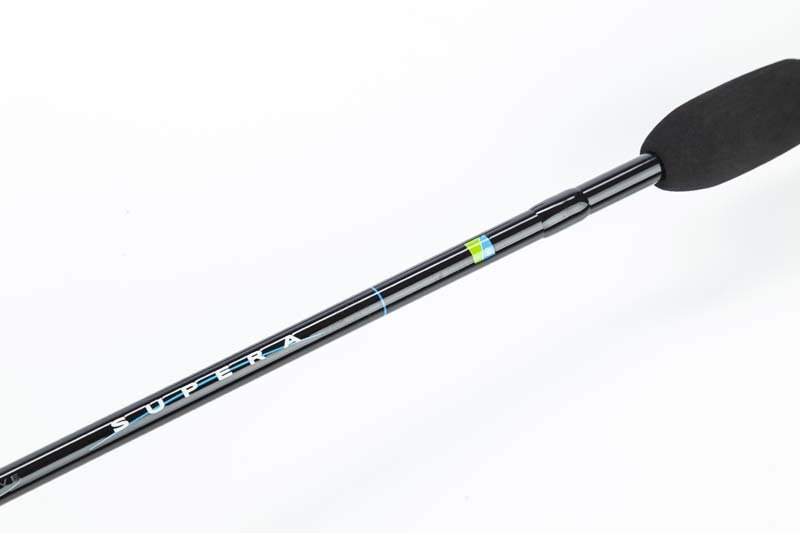
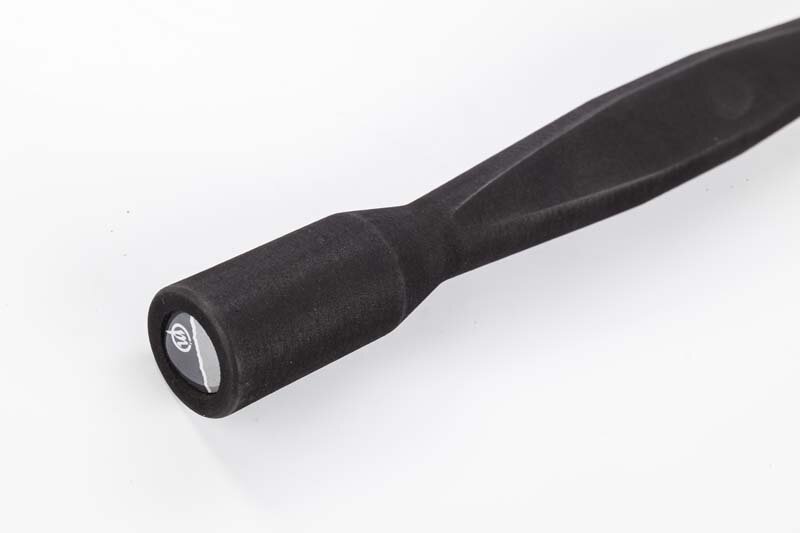

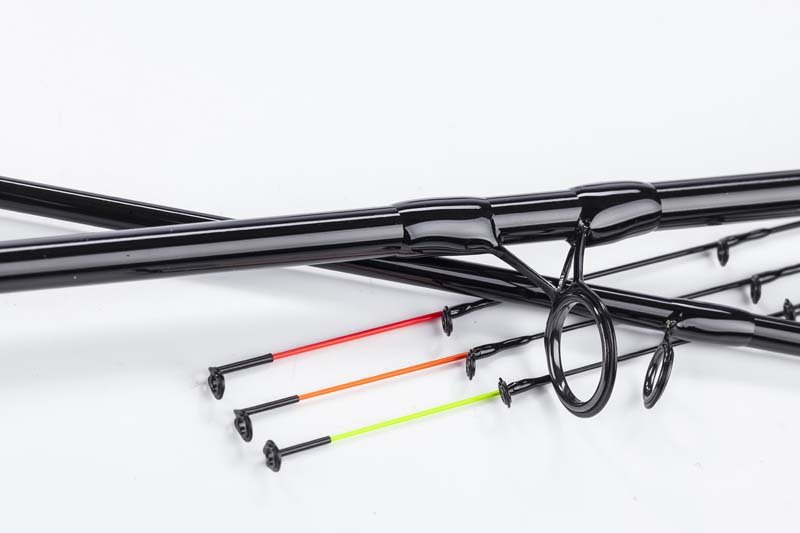
Mark’s verdict
This cute little Preston number ticks all the boxes. Its anti-lock cushioned action is perfect for small commercials, with just the right amount of backbone if you hook a decent carp but sufficiently forgiving to coax in skimmers and F1s.
Completely problem-free, the rod is super-accurate and you’ll land your feeder with pinpoint accuracy time after time.
As long as you don’t overload it or attempt to blast a feeder to the horizon you’ll be chuffed to bits with its outstanding all-round performance.
Price: £169.99
Daiwa N’ZON Z XL 13ft feeder rod Review
A few weeks ago we looked at Daiwa’s latest N’ZON tackle range for feeder anglers.
There are more than 30 new rods in the line-up, three dedicated feeder reels, luggage and nets, not to mention superbly designed ‘tough as you like’ feeders.
Here there’s a choice of metal cage, distance, tunnel and square models and plastic-bodied open-enders, plus three coated bombs – dubbed Tri, Quad and Oval.
So without further ado let’s take a closer look at an N’ZON rod. Those with the ‘Z’ prefix, including the Z XL 13ft Feeder on live test duty, are the more expensive models, ranging from £165 up to £235, while the ‘S’ range starts at £84.99 and rises to £110.
Both marques cover all feeder disciplines, from short bomb work to hitting the horizon.
Daiwa rates the 13ft Z XL Distance Feeder rod to casting weights up to whopping 180g (6oz), and it’s worth mentioning that there are two other 13ft
Z XL rods rated to 120g and 150g respectively, plus three Z series 14ft rods with the same loading capacities.
Not so long ago such rods would have been considered specialist tools, suited only to European anglers. However, these days Irish loughs and Scottish lochs, big wild waters, and huge reservoirs such as Bough Beech and Boddington are commonly used for feeder matches. So there is a need for distance-casting tools that can handle hefty feeders and a wide range of fish species.
Having fished with the rod on three occasions when distance casting was a priority, I can tell you that the N’ZON Z, XL is fully up for a big chuck.
Obviously its 13ft length helps generate added tip speed if you allow a decent drop between rod-tip and feeder prior to the cast. This, matched with a high weight loading point and fast taper three-section blank, adds up to a mega-pokey rod.
I have caught a few skimmers and roach on the Z XL 13-footer, and I didn’t suffer problems with lost fish or hook pulls – although I wouldn’t go below a size 16 hook or line lighter than 0.16mm.
I can see this rod being an option for those who target big-fish venues and need to cast heavy feeders or leads into the middle of next week.
Mark’s verdict
Good as this rod is for distance work, I would probably choose the 150g or 120g Z XL 13ft Distance rods as these would provide a more cushioned, progressive fish-playing action, rather than the raw power of the 180g model.
I can, though, see match and pleasure anglers who fish the Trent, or any major river that needs to be tackled with hefty feeders and end tackle, finding a place for it in their rod holdalls.
Price: £225
Daiwa Black Widow G50 12ft Rod & Reel Review
If you’re just starting carp fishing, or looking for a set of rods and reels that you won’t have to spend years paying off, then you’ve never had it so good.
Improvements in technology and manufacturing have seen the quality of sub-£100 rods rocket beyond all expectations.
Daiwa’s extensive Black Widow range can certainly be classed as excellent value for money.
Covering everything from rods and reels to accessories, each item is well constructed and sensibly priced.
For this test I focused on the Black Widow G50 rod, having picked out the 12ft, 3.25lb test curve rod from the range of six.
There are also 2.75lb, 3lb (both £74.99) and 3.5lb (£79.99) versions available, as well as a 4.5lb rod for spod and marker work which retails at £84.99.
For those fishing on smaller waters, or in tight swims where casting is hampered by overhanging branches, there’s also a shorter 10ft, 3lb model.
My 12ft rod – or set of three, to be precise – were matched with Daiwa’s Black Widow 25A reels.
This is a combo I’ve had a few sessions with, catching several carp to mid-doubles during evening trips of just a couple of hours.
For the purposes of this shoot, I’d arranged to meet our cameraman Lloyd at my local lake in Somersham, Cambs.
Set in a 12-hectare nature reserve, the lake is a few acres in area and home to a real mix of species, including a good head of carp to more than 20lb.
On arrival I could see several fish mooching around in open water and close to large set of lily pads – the perfect target.
I flicked out one rod with a 12mm white wafter hookbait and a small PVA bag of pellets attached to the hook.
I was still sorting out the second rod when my bite alarm emitted a couple of bleeps. Seconds later I looked down just as the bobbin pulled up tight and the spool on the 25A reel started spinning.
Although I was fishing in open water I had to quickly pile on the pressure as the hooked carp was kiting directly towards a dense raft of lily pads and the sanctuary its tangled mass of roots and stems would offer my hoped-for prize.
When you enter 3lb-plus test curve territory there’s often the risk of rods being a bit pokey, and you have to sacrifice fish-playing subtlety for casting capabilities.
I was pleased to discover that this wasn’t the case with the Black Widow G50.
The rod loads across its whole length, which results in a good cushion for hookholds and enables the rod to absorb any sudden lunges under the rod-tip when you’re about to net a fish.
Thankfully, with the rod’s help, I managed to convince the fish that charging into the lily pads wasn’t the best idea and it was soon safely in the bottom of the landing net.
Over the next couple of hours, we landed four more carp to mid-doubles, and at no point did I feel like any of the fish was going to escape.
Every lunge was cushioned by the rod, and the 25A reel’s abbreviated drag range enabled me to quickly adjust the tension on the clutch as required during the fight.
These Black Widow reels fall into the compact category of carp reels, or ‘baby big-pit reels’ as they’re often referred to.
Don’t be fooled by their size – they can still hold 240m of 0.32mm/12lb line and retrieve 92cm of line with each turn of the handle.
The truth is that on most waters in this country, except for the largest of venues where fishing at extreme distances is called for, big-pit reels with huge spools aren’t really necessary.
The 25As will do the job perfectly. And they look great! The all black graphite body is not only strong and keeps weight to a minimum, but sat under the rod’s full Duplon handle they provide a set-up that would please even the most flamboyant of tackle tarts.
Shakespeare’s Sigma Offers Unbeatable Value
Hoping to get into pellet waggler fishing this summer? You’ll be hard pushed to find a rod offering better value for money than the 10ft 6ins Shakespeare Sigma Supra Pellet Waggler.
As it’s priced at just £44.99, you might well expect the Sigma to be heavy and of poor quality – however, my experience of Shakespeare’s rods tells me that nothing could be further from the truth.
Having owned a Mach 2XT Barbel rod for 10 years, I can vouch for the strength and robustness of the company’s rods, and I expected the same of the Supra Sigma Pellet Waggler rod.
Featuring a sturdy screw-down reel seat, a strong carbon blank and titanium oxide guides throughout, the rod is tailor-made for taming hard fighting commercial fishery carp.
A mixed cork and EVA handle, along with simple graphics, give the rod a rugged, no-nonsense look, and unlike a book, I expected to be able to judge the Sigma by its cover.
I headed to Cambridgeshire’s Decoy Lakes to test my theory, and sat on Lou’s Lake, where carp were basking in the summer sun.
The rod balanced perfectly with a 3000-sized reel, and is light enough to hold all day – essential when fishing the waggler.
After feeding the swim for a few minutes and casting regularly, the float buried and the Sigma was yanked into its fighting curve.
The rod’s action is best described as ‘slow to through’, with a soft tip that steadily tapers down to a beefy butt section.
A feeling you sometimes get with budget rods is that they will shatter at any moment when they’re tested to their limit, but not so with the Sigma.
Throughout the day I never felt under-gunned, as I have done in the past when using softer pellet waggler rods that bend right through to the butt. Pulling fish away from snags on the far margin was no problem at all.
The rod also casts well, and despite it having a 10g-30g casting weight I could chuck a 7g waggler with ease.
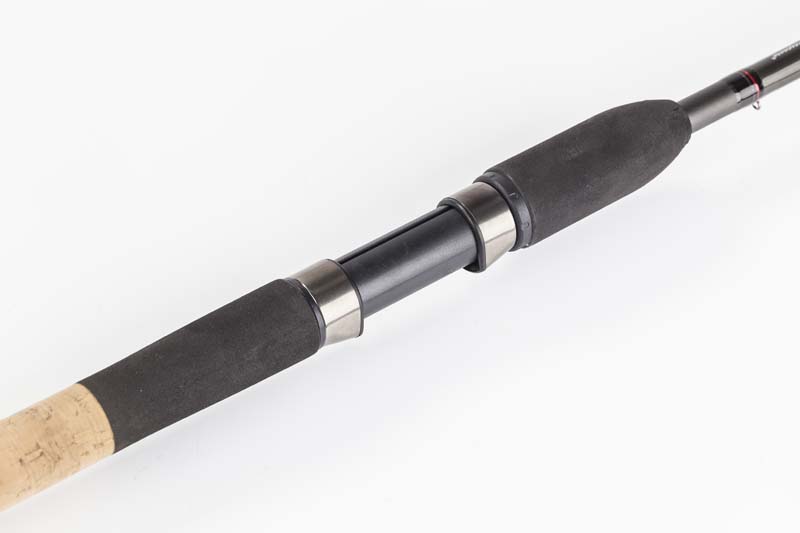

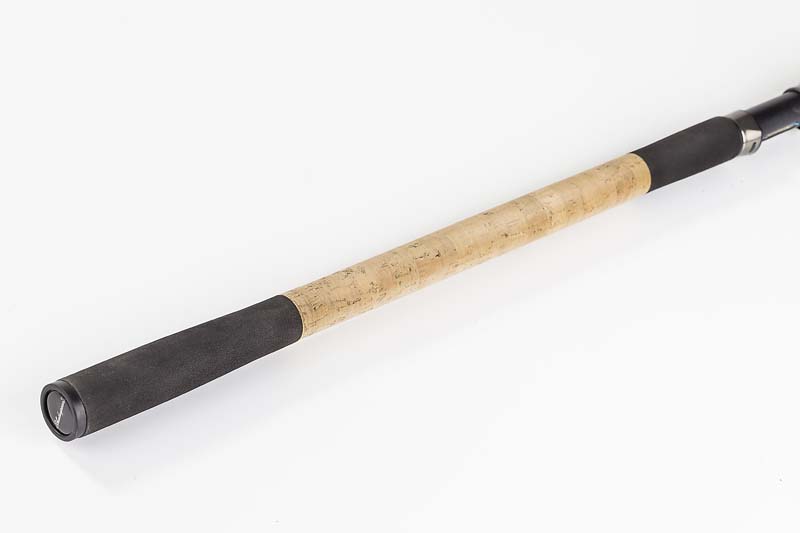

Its 10ft 6ins length makes for pinpoint accuracy, which is a particularly attractive feature, because one of the most popular tactics at the moment is ‘mugging’, where you cast a single bait at a cruising fish. On the day I tested the rod this ploy was particularly important, as the carp weren’t really interested in feeding shallow – and so dropping a bait right on their noses was the best way to fool them.
Shakespeare is a company that has built its reputation on offering professional quality at an affordable price, and the Sigma Supra carries on that tradition.
Verdict: For catching ‘proper’ carp you’ll struggle to find a rod that offers better value for money. This makes the Sigma Supra Pellet Waggler the perfect tool for someone new to pellet waggler fishing, or as a spare for the more experienced angler.
What I would say is that if your local venue contains a large head of F1s or carassio, fish notorious for coming off under the rod-tip, you may experience problems with hook pulls due to the stiff butt section of this rod. However, with regular commons and mirrors you’ll be fine.
Don’t let the 10g-30g casting weight put you off, as this rod will comfortably cast much lighter wagglers.
If you shop around it’s also possible to pick up this rod at prices well below its RRP.
Price: £44.99
Daiwa Black Widow Barbel Rod 12ft 1.75lb & Black Widow Specialist Rod 12ft 1.5lb Review
Looking every inch like expensive custom-built rods, the two 12ft Daiwa Black Widow Barbel and Specialist models are built using full-carbon two-piece blanks that are garnished with an understated matt non-glare finish.
They are furnished with a well-spaced set of durable stainless steel framed guides that have hard-wearing, braid-proof aluminium oxide linings. Both rods also have hollow tubular top sections that are ideal for fishing situations which require the use of heavier leads, feeders, and stronger than normal terminal tackle.
However, before you run away with the idea that this pair of affordable specialist rods are both little more than ringed broom handles, they are both supplied with permanently fixed 2oz test curve glass quiver top sections ideal for targeting shy-biting fish or when tackling still or slow, meandering water where a more sensitive set-up will be beneficial.
Which rather bizarrely is a million miles away from where the pair actually underwent their endurance of a live test. Heavy rain and high water levels just after the start of the new river season had meant that the fish had been pushed out of the normal areas I would expect to bag barbel and catch reports from the opening week were pretty sparse. After a few phone calls I discovered a few fish were being caught from the tidal Trent. If anywhere’s going to test a barbel rod to its limits it’s here, I thought to myself. If it can survive this test it will handle anything else.
The Tidal Trent is a serious water. It’s wildly fast flowing in spots, very deep in places, boils and bubbles like a witch’s cauldron, and is generally completely unforgiving of angling errors.
Its rock and boulder banks and bed are a nightmare, and just to make things doubly difficult for the angler, it flows both ways depending on the tide of the day. Oh yes, it’s quite tasty too but most definitely more Vindaloo than Korma!
The fish that swim the inhospitable depths of the Tidal Trent are nothing less than lean, mean, super fit fighting machines. Think of them as permanently living on a fast-paced treadmill! And that’s what makes the tidal reaches so popular with a multitude of match and specimen anglers. It’s wild water fishing at its raw best.
So where and how does this Daiwa pairing fit into the equation? Well although both rods are close to the cusp on both casting weights and casting distances on a river such as this, the lighter Specialist model is well worth a look, even if you’re a match angler targeting fast-water bream, skimmers and hybrids.

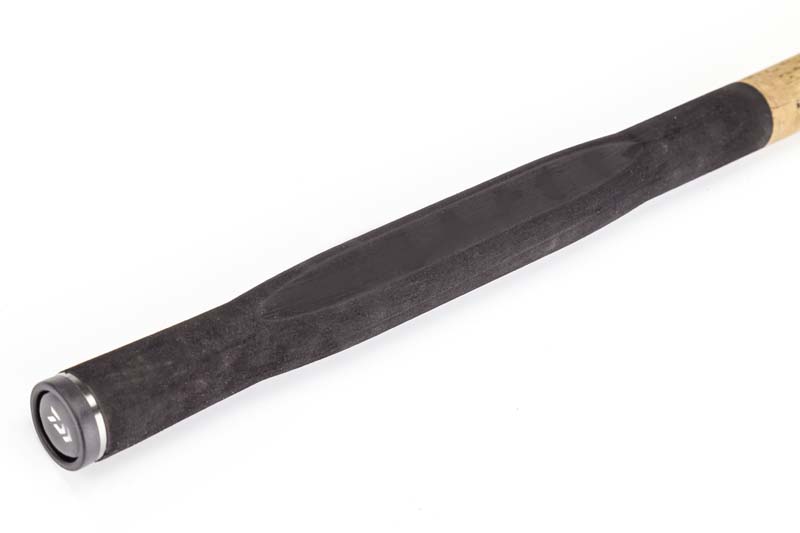

It has a bit more backbone for casting heavier feeders than a normal match style quivertip feeder, but with just enough cushioning softness to allow for lighter lines, from say 0.14mm and more, and smaller hooks from size 16 hooks upwards.
The Barbel model was pushed to its absolute limit on this live test, as the session kicked off with a hefty 70g feeder cast to mid-river and went up from there, as the ebb tide pulled hard. Fish-playing wise, the blank’s progressive action is a little too much for a powerhouse river such as this, and I did lose a couple of big fish I couldn’t keep out of the boulders. Maybe it was it was just bad angling on my part. But let’s face it, none of us ever blame ourselves! And the occasional loss is always going to be expected when fishing such an extreme venue.
By the end of the test, however, the number of fish the rod put on the bank vastly outnumbered those that had escaped. If rods could talk, this one would have said ‘thank flip that’s over with!’
Mark’s verdict
For my money the Black Widow Specialist model would make a good stillwater tench and bream tool and would also double-up as a very handy winter chub rod for any water. The Barbel model is an ideal all-rounder for any river, maybe better suited to the more sedate Thames and Avon flows, where its 2oz fixed quivertip section would come into play. Pacier rivers such as the Wye, Severn and Trent could be tackled with its tubular carbon top section.
The tidal Trent really is at the upper limit at what the rod can handle. But the venue is a different animal to most waterways and normally requires tackling with what can be hugely expensive bespoke rods. The fact that this high value for money Black Widow rod tamed plenty of fish from this river speaks volumes about how good it is.
Korum Neoteric FS 1.75lb 12ft rod
The pursuit of specimen fish other than carp can be a heady affair. Picture an early-morning walk to the lake through dew-laden meadows painted with golden shafts of sunlight.
Your every step is softly placed, lest the grass underfoot snaps with thunderous disapproval. The dawn chorus quietens for a moment, then strikes up again – if the birds don’t know you’re here, no-one will.
Lily beds, bedecked with white and red flowers, are in stark contrast to the lake’s peat-stained water. Their stems twitch and bob, revealing tell-tale signs of fish movement below.
A deft cast places the float in the perfect position, and with a few grains of corn scattered around it tiny streams of bubbles emanate from the depths. To a time-served angler these are a sure sign of an impending bite.
Then, as if possessed, the float lifts fractionally before sliding away, and you’re in.
Romantic and dewy-eyed as such images may be, the plain truth is that most modern-day specialist angling is conducted on large open gravel pits.
All of which brings me nicely to the latest Neoteric FS rods from Korum. The original Neoterics appeared back in 2011, in fact I still use the superb 12ft twin top models for most of my barbel fishing. The new 12ft, 1.75lb Neoteric FS rods on test, though, are among four models with lengths from 11ft 6ins up to 12ft, test curves from 1.25lb to 2.25lb, and casting weights ranging from 15g to 120g.
The Neoteric carbon blanks are two-piece, and their fittings revolve around managing a comprehensive array of modern specimen tactics for a variety of species. Light, slimline carbon blanks with a powerfully progressive action are teamed with stabilised tips for accurate casting of feeders and leads.
On the bank the rods have the look of expensive custom-built models. Their non-reflective matt grey gunmetal finish contrasts attractively with the high-gloss 3k carbon weave area just above the handle, while the full cork handle and well-spaced, fully lined Seaguide rings add class and sophistication to what are very sensibly priced rods.
In keeping with my opening words, I choose to live-test the rods at a well-established old gravel pit with picture postcard reed and lily pad margins.
I’d be targeting the deep water’s tench and bream with corn, worm and maggot hookbaits over PVA mesh bags of micro pellets. Using 2oz leads and small bags I can happily report that the 12ft, 1.75lb rods on test can cast this sort of set-up with consummate ease, and could easily handle at least an ounce more casting weight.
The blanks are seriously powerful on the cast, while their progressive fish-playing actions are meaty and uncompromising, perfect for big fish in weedy waters, or where casting distance is of paramount importance.
I would, though, suggest that unless you are after longer casting distances or the use of heavier leads or feeders, the lighter 11ft 6ins, 1.25lb rods would better suit smaller venues where shorter casts are the order of the day.
Verdict
Korum has thought long and hard about its latest Neoteric FS rods. They are designed for the specialist angler regardless of fish species or type of venue. Their heavy, progressive playing actions, especially the 1.75lb and 2.2lb test curve versions, make them ideal for weedy or snag-strewn waters.
Price: £84.99-£99.99
Daiwa Black Widow Range
Daiwa’s extensive Black Widow kit is a high value for money big-fish range that covers everything from rods and reels to luggage and accessories. Whether you’re new to carp fishing or just want to kit yourself without spending an absolute fortune then this could be exactly what you’re after. This month we take a look at some of the main items that the range has to offer...
1) G50 12ft rods
A range of rods from 2.75lb to 4.5lb test curve offering power and distance with good fish-playing properties. Features include lightweight blanks, slim full shrink grip handles, 50mm butt guides and a DPS reel seat. The 4.5lb model is ideal for spod and marker work
RRP: £74.99 - £84.99
2) 25a reels
Compact big-pit style reels with ‘carpy’ all black looks. Features include an abbreviated drag range, line-friendly clip and a graphite body for weight saving and toughness.
RRP: £79.99
3) G50 10ft rod
This shorter rod is ideal for use on small waters or in tight swims where overhanging trees making casting 12ft rods tricky. RRP: £64.99
4) 6 leg bed
Designed around a steel frame and weighing 9.5kg, this well-padded bed has a cushioned pillow for extra comfort. The leg lock system ensures stability and it packs down to a compact size.
RRP: £99.99
5) Carp chair
A compact and lightweight chair with a cushioned seat and backrest. All of the legs are extendable and have swivel mudfeet. The chair packs down nice and small so is easy to transport.
RRP: £49.99
6) 3 rod pod
A versatile pod which enables you to easily change the height, length and angle with the leg adjustment system. In-built spirit levels ensure a stable set-up. Supplied in a case for easy transport.
RRP: £89.99
7) 40L carryall
A spacious holdall with a zipped main compartment, two front pockets and two side pockets. There’s a strengthened material on the base of the carryall and pockets for longevity.
RRP: £36.99
8) Unhooking mat
A PU covered flat foam mat. Folds up for ease of transport.
RRP: £16.99
9) weigh sling
Made from fish-friendly mesh with strong webbing weigh straps.
RRP: £11.99
10) Rig wallet
Two foam boards and hook locater bar enable you to keep your pretied rigs organised and in top condition. Supplied with 10 pins.
RRP: £13.99
MIDDY ARCO-TECH CARP FEEDER Review
Middy International has the happy knack of producing great rods at a great price – in fact its original silver-coloured 4GS range still ranks among the best in its price bracket.
So when Middy boss David Middleton called to tell me he had the new Arco-Tech rods to show me, I was keen to see how the successor to the 4GS would measure up.
Within the Arco-Tech series there are two feeder models – the K-275 9ft/10ft and the K-306 10ft/11ft. Both are super-slim, but not so slim that you feel you need to treat them with kid gloves! A super-tough Kevlar wrap strengthens the blanks throughout. Both rods are multi-length, thanks to a short foot-long extension without eyes. Should you need to extend the rod to its longer length, simply slip in the extension in mid-session. A nice touch, you’ll agree...
There’s plenty of poke in the butt section, while the tip section is much softer, striking a pleasing balance between power and forgiveness. The action is soft to parabolic, so F1s or skimmers will still put a lovely flat spot-free bend into it, while the chances of losing fish when using light lines and small hooks are remote.
The final key feature is the unique ‘Trigger Tips’. These are super-sensitive carbon tips whose unique action emphasises the most tremulous of bites. The light tip, in particular, is very impressive in this respect and well lives up to its Trigger name.
Middy is really proud of these rods, quite rightly so, as they are packed with features, and raise the rod building and development bar even higher.
The live test at the pretty day-ticket Stretton Farm fishery just off the A1 north of Peterborough proved to be a sodden affair, with unrelenting rain all day long. The only bright spot was the 10ft/11ft Arco-Tech Carp Feeder rod on test performance – crisp as fresh lettuce, and with just the right blend of power and poise to make it ideal for most commercial tactics. The rod is no Olympic distance performer, but will easily handle a pub-chuck of 35-40 yards with considerable accuracy.
My best advice to anyone looking to own one of these slender beauties is to make sure you keep the line between rod-tip and feeder tight at all times to prevent it from looping back over the end guide. Make sure (with a quick tug prior to casting) that it isn’t caught up, as the Trigger Tip ends are very fine and wouldn’t survive the impact of a miscast.
Verdict: The Arco-Tech is an ideal rod for commercial anglers, and has some excellent new features. KTS Smooth Flow guides sit at a special angle to prevent wrap-ups during the cast and make the whole process very smooth. Being able to add a 1ft butt extension is very handy, especially as you don’t need to break down your tackle. The light and medium Trigger Tips are ideal for spotting tiny bites when the fish are in a fickle mood.
The rod is rated to 10lb mainlines and 8lb hooklengths, with a recommended maximum casting weight of 50g, so don’t think that it won’t handle bigger fish.
Personally, though, I would use the rod with 6lb mainlines, hooklengths up to a 0.19mm, and feeders up to 30g.
Price: £99.99 (but shop around)
Daiwa Crosscast Rod & Reel Review
Looking to get into big-carp fishing on a budget but don’t know what rods and reels to buy?
Simple! Read this review, then watch the video on Daiwa’s Crosscast 10ft, 12ft and 13ft rods with test curves from 2.75lb to 3.5lb. Built around Daiwa’s proven 1K woven carbon blanks, these beauties will help you to add yards to your cast.
A responsive, progressive action ensures that you’ll stay in control of the hardest-fighting fish.
Team one of these with the new super carpy Crosscast carp reel packed with top-end tech including a superb QD front drag system, HIP line-friendly clip and super smooth Diggigear retrieve and you’re off to a flying start!
CROSSCAST 5000C QD REEL
Daiwa’s latest Crosscast Carp 5000C QD is, in my opinion, a big pit game changer of a reel.
Packed with more technical wizardry than a Euro jet fighter, not only does it hit the heights in performance terms, but its classic all-black finish and sharp body lines are up there with the very best in the style stakes.
The Crosscast slow oscillation system produces a line-lay that even to the trained eye looks as precise as you would expect to find on the most expensive reels. And as the reel is endowed with Daiwa Digigear it has a ramped-up, silky-smooth winding transmission that pulls in 106cm of line per handle crank.
The front-of-spool QD (quick drag) system works a treat, with nothing more than a few clicks on the spool knob needed to pile on or reduce the pressure when playing a big fish. QD also makes easy work of setting the reel spool up perfectly under any conditions for your next run.
The amount of line (300m of 0.35mm) you can get on to the
long-cast spool will appeal particularly to those who like to place their baits at range using a bait boat.
During the live test I played a big fish while standing waist-deep in water, then purposely dropped the reel into the wet stuff for several minutes while I unhooked the fish.
Did a dunking affect the reel and how it performed in any way? Well... quick shake dry and it was working just as well as when I took it from its box. How on earth does Daiwa produce this reel for under £80?
Price: £79.99
CROSSCAST CARP 12ft, 3lb test curve
Thanks to a dependable carbon weave material and a decent array of furnishings, Daiwa’s Crosscast carp rods are as easy on the eye as they are on the pocket.
For a modest amount of moolah you get ceramic LS-lined guides (including a 50mm butt guide and anti-frap tip ring), full flared shrink-grip handle and an original Fuji reel seat.
The 12ft, 3lb test curve model on live test duty is a ‘Steady Eddie’ of a performer that can turn its hand to just about any method. It will handle solid PVA bags and straight lead set-ups, and is just about soft enough on the top of its tip section for zig tactics using hooks as small as size 12.
Very well suited to smaller or middle-sized venues, it will chuck up to 65 yards with ease, and will achieve 100 yards-plus in the hands of an accomplished caster.
However, the Crosscast is definitely not a horizon-buster, but more of an all-round tool for the newbie carper looking for a dependable and good-looking carp rod on a realistic budget.
Price: £89.99
Middy Reactacore XZ Ultra-Control Mini Commercial feeder rod
Middy produces some impressive commercial fishery rods these days, and there’s something to suit everyone’s budget.
The latest Reactacore XZ feeder rods include the fast-taper three-piece XZ Ultra-Control 12ft 6ins all-round distance model. This test, though, is all about Middy’s two-piece 10ft 6ins Reactacore XZ Mini Commercial rod, built using the latest Quad-layering carbon technology. This involves four sheets of high-modulus carbon layered together at different angles, and results in a strong, rigid rod with a highly reactive parabolic fish-playing action.
The carbon undergoes a VC-X extreme pressure vacuum curing process that forces out any tiny air bubbles for a uniformly excellent action. The rod also benefits from Maximus weave wrap joints which prolong the life of the joints but increase the linear strength even further. All very impressive stuff!
The feather-light blank is exceptionally slim, and boasts classy SCX smooth cast guides, a small hook retainer, modern S-Line style reel seat, and two carbon quivertips. Middy rates the rod to a maximum 10lb mainline and 8lb hooklength, with casting weights between 10g and 56g. And let’s not forget the natty Middy MX-Series rod bag it arrives in.
These top-drawer rods are not cheap. The new 10ft 6ins Reactocore XZ Mini Commercial Feeder will likely set you back around £209, but the ‘wow factor’ alone justifies the price.
To confirm that quality I headed to Decoy Lakes. Its many lakes respond to all manner of tactics and the fish range from great big lumps through to turbo-charged barbel, F1s of all sizes, and a raft of silvers – all of which are of a decent size and will respond to most open-water tactics.
Putting this XZ rod together, you can’t help but be impressed by its pencil-slim profile. Its sections are pretty much of equal length when the carrier section’s quivertip is in place, so it can be easily transported ready made-up.
I was not, though, wholly convinced by its suggested 56g (2oz) maximum casting weight. For me the top end of the carrier section has slightly too much play in it. It would be fine with up to 40g (more than enough for your average commercial when using a rod less than 11ft long).
There’s no denying its impressive post-cast recovery rate, but this rod is clearly not of the ‘give it a whack’ breed! An over-enthusiastic miscast could prove very costly!
That aside, the performance of Middy’s flagship feeder-flinger offers a wondrous amount of torque and feel, and an all-round performance up there with the best commercial feeder rods.
The stunning gloss black blank has a phenomenal line pick-up speed, casts straight and true and is super lightweight in the hand. The parabolic action is responsive to any size of fish. Quite simply it’s immaculate. Does it have the ‘wow factor’? Most definitely!
Verdict: A genuine high-performance feeder rod, this top-end model will comfortably handle feeders and straight leads of 40g-plus with ease. Equally suited to light maggot feeder and flatbed Method tactics with wafter hookbaits, or indeed fishing a straight lead with bread discs.
Price: £209.99
Maver MV-R 9ft Mini Feeder review
The new MV-R Commercial Mini Feeder rods from Maver are the perfect tools for anglers fishing venues where short-range casting for carp and F1s is required.
The 8ft and 9ft models are part of the MV-R range that consists of nine rods. There are four float fishing models and three feeder rods on top of the two Mini Feeder rods. All the rods feature ultra-slim high modulus carbon blanks with a jet-black gloss finish.
Boasting a seamless, progressive fish-playing action and top-grade ceramic guides, cork and EVA handles and screw-down reel seats, their good looks are matched by their superb performance.
For this test I decided to give the 9ft Mini Feeder model an outing. This rod has a wickedly fast progressive action that will easily cast a feeder or straight lead of up to 30g to 35 yards without too much effort.
If you think you will need to cast further than this then the 10ft version is what you want. For real long distances take a look at the MV-R 11ft and 12ft rods.
The first thing I noticed about the nine-footer was that it felt a tad tippy, but it’s just the job for F1s and smaller carp, minimising the likelihood of hook-pulls or snap-offs at close range. The blank is well suited to reel lines from 3lb-8lb, and hooklengths of 0.13mm and upwards.
The pencil-thin carbon blank breaks down into two 48ins sections with one of the three supplied quivertips – 0.5oz, 0.75oz and 1oz – fitted. This two-piece design means you can have it ready-to-go with a reel attached in your holdall, saving you the time normally reserved for setting up when you arrive at the venue.
For this test I headed to Willows Lake on the Decoy complex at Whittlesey, just outside of Peterborough.
The plan was to fish a small maggot feeder, which I was confident would produce bites from F1s. This tactic requires minimal feed and accurate casting, which is exactly what this rod delivers.
I found the wand very much to my liking. It cast, as expected, straight as a die, and on a small platform it was nice and easy to get into position.
Tippy it may be, but that suited me fine as I landed several fish up to about 3lb. Had anything bigger come along I would have been confident of landing it because I have handled enough short feeder rods to know that this one had more than enough steel in its backbone to handle it.
A weak-willed wobble wand it certainly isn’t, so well done Maver.
Verdict:
The 9ft rod is free of flat spots, with an impressive fish-playing pedigree to suit commercial waters. It would also make a handy summer margin Method tool.
It’s not cheap for such a short rod, but you get what you pay for. For me, a big plus point is the equal-length sections, making it a doddle to transport already made up in a carryall.
Price: £120
Contact: www.mavermatch.co.uk

